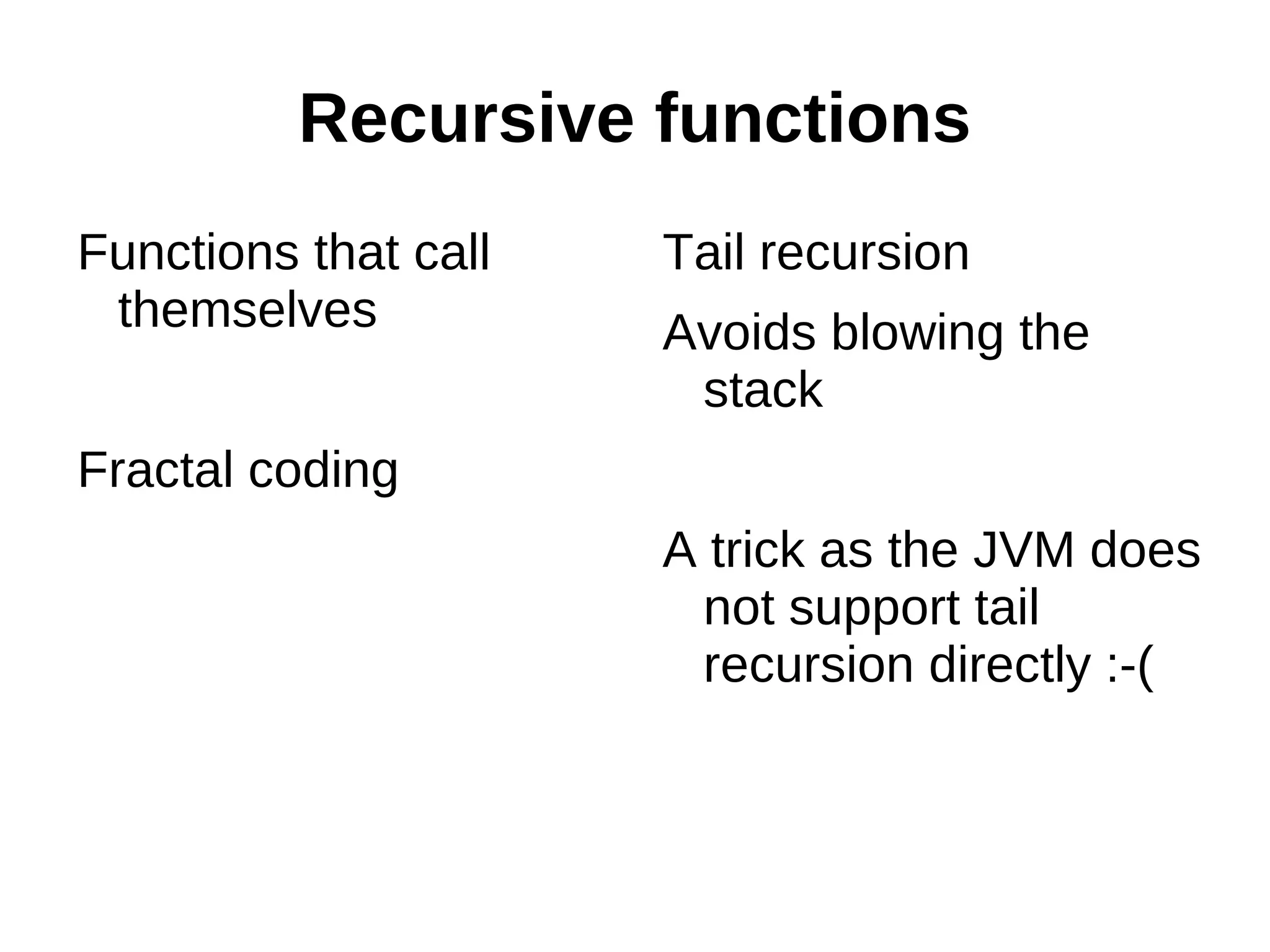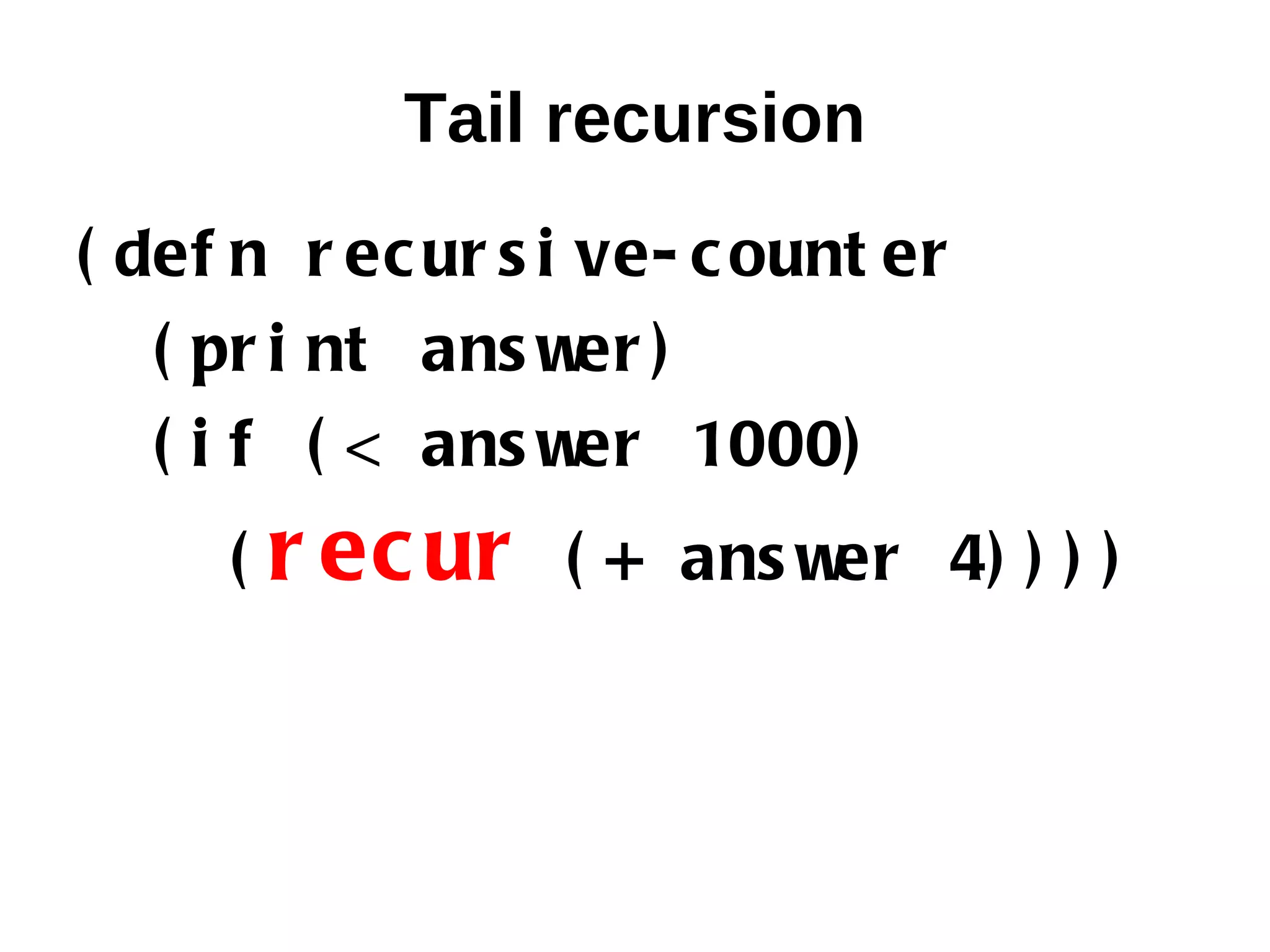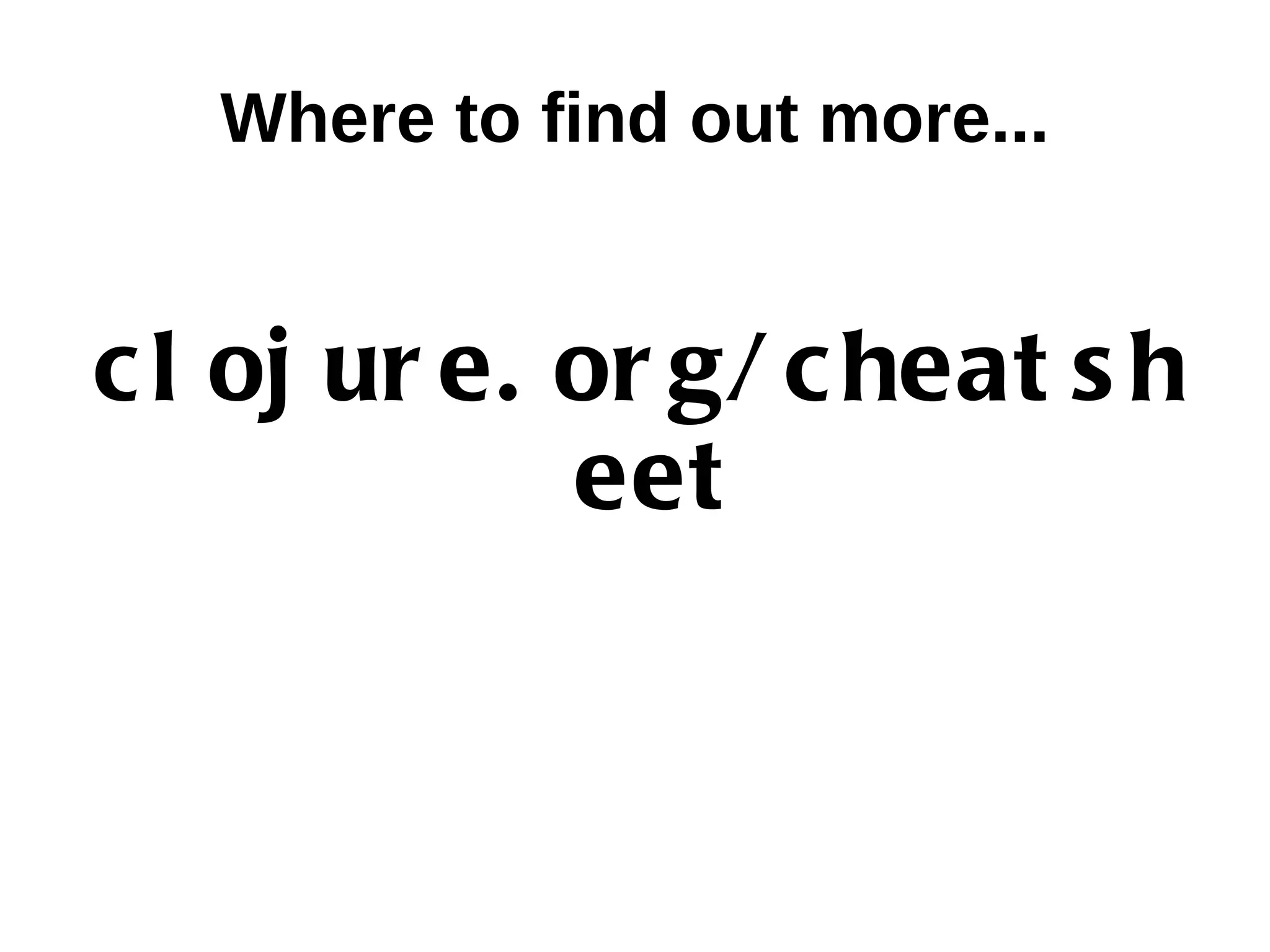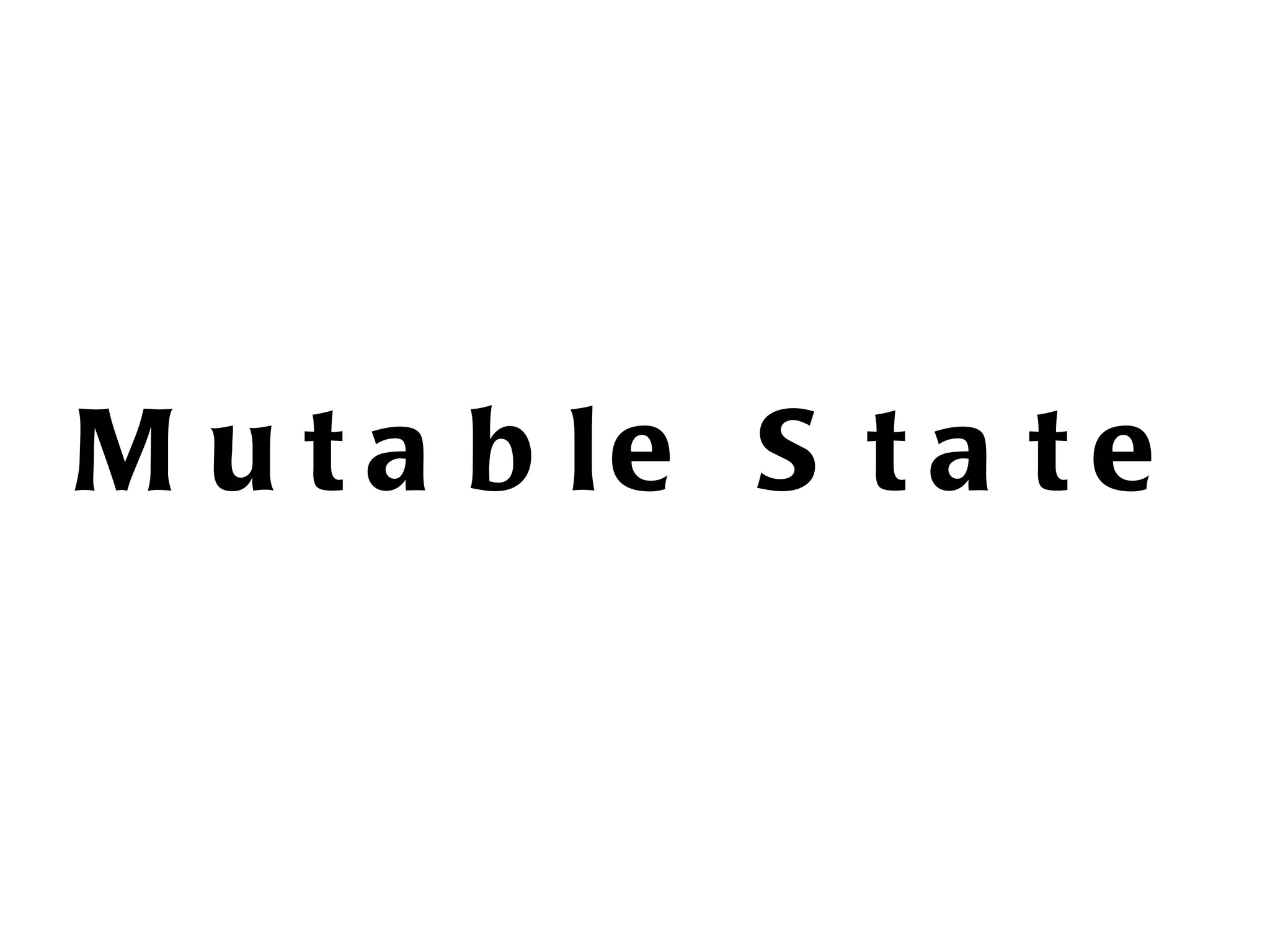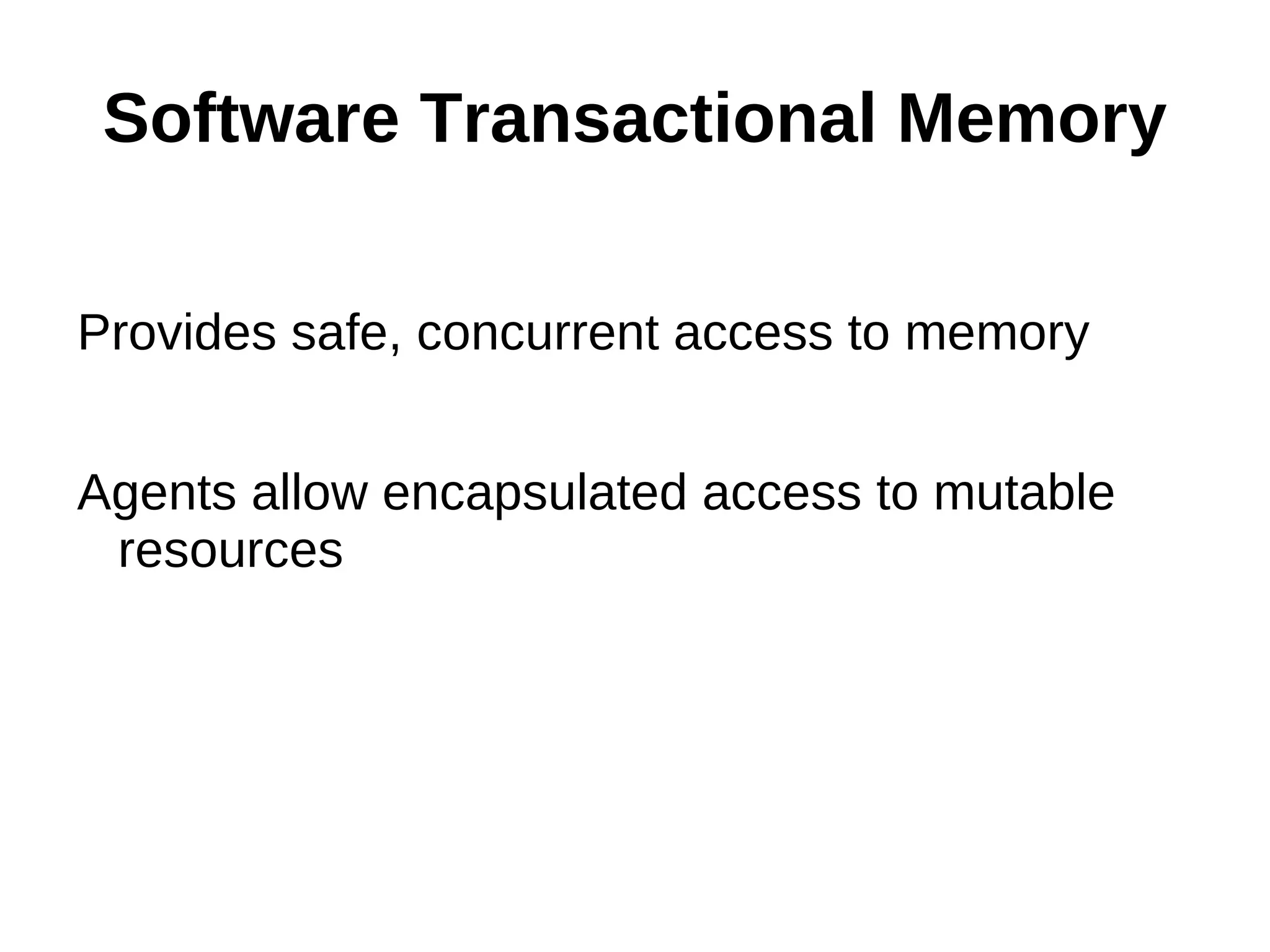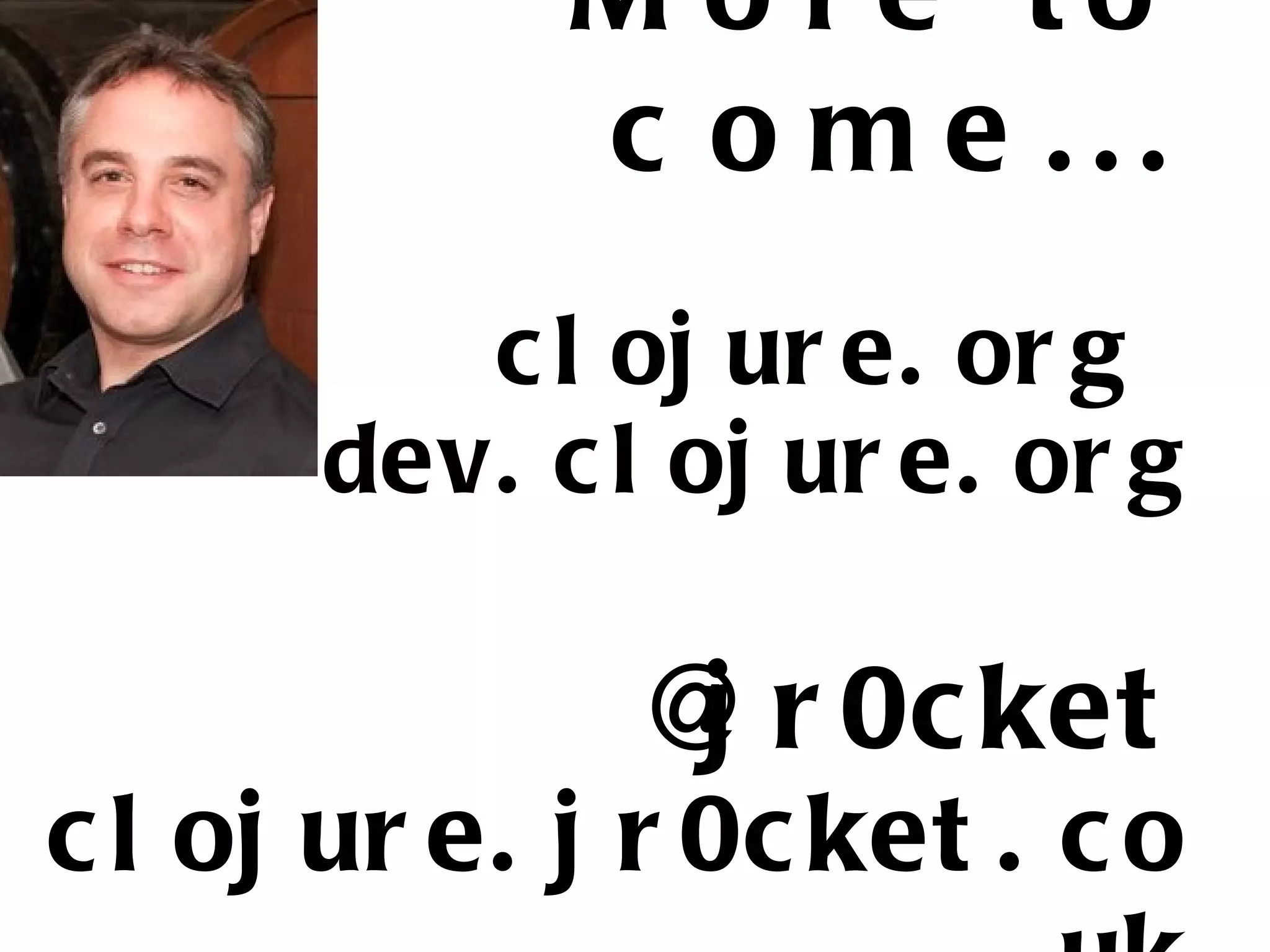The document provides an overview of Clojure, highlighting its flexibility, pure functional approach, and seamless JVM interoperability. It covers basic syntax, data structures, function definitions, and introduces software transactional memory for concurrent access to mutable state. Additionally, it emphasizes Clojure's capabilities for working with data and integrating with Java.

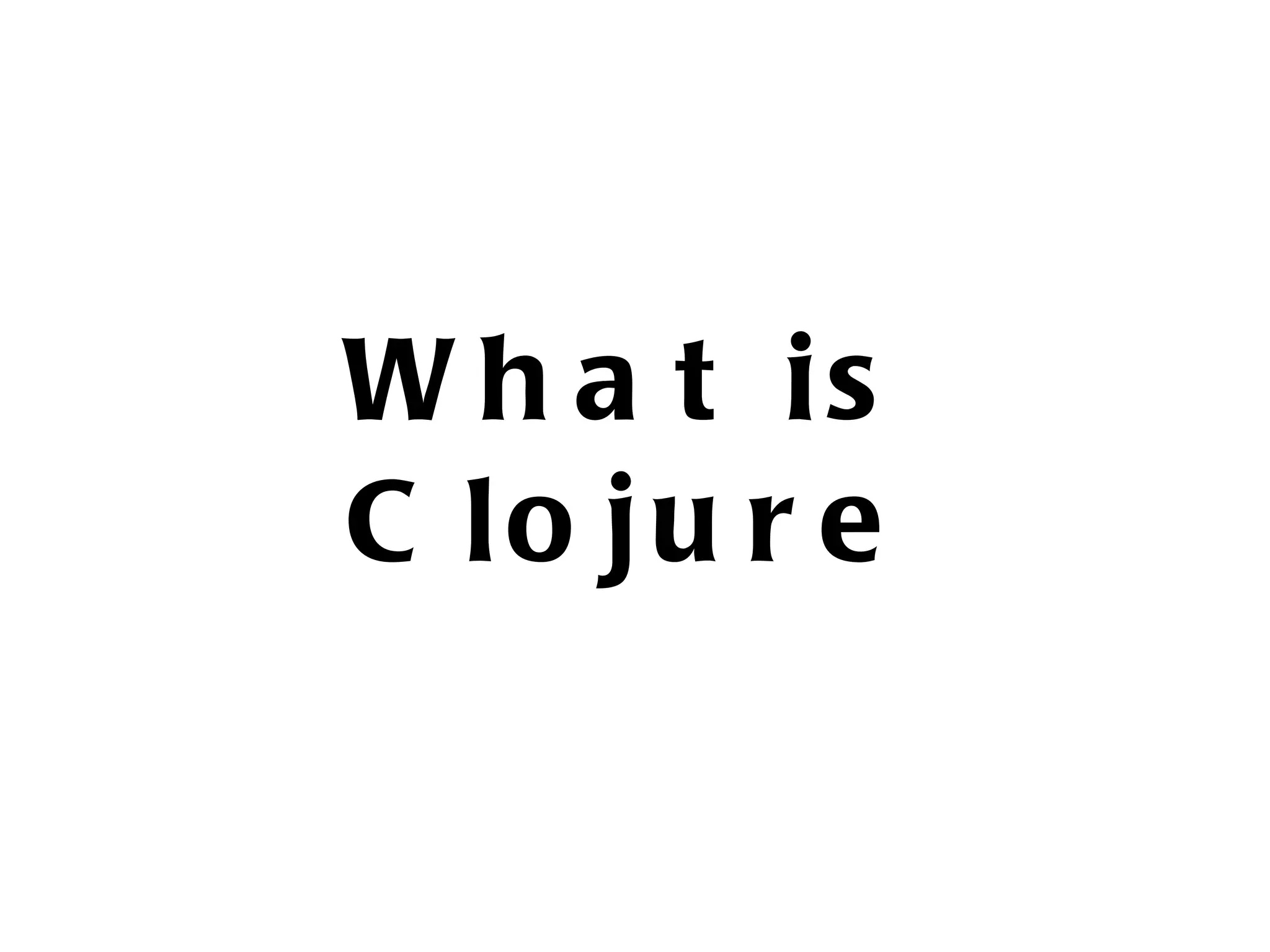


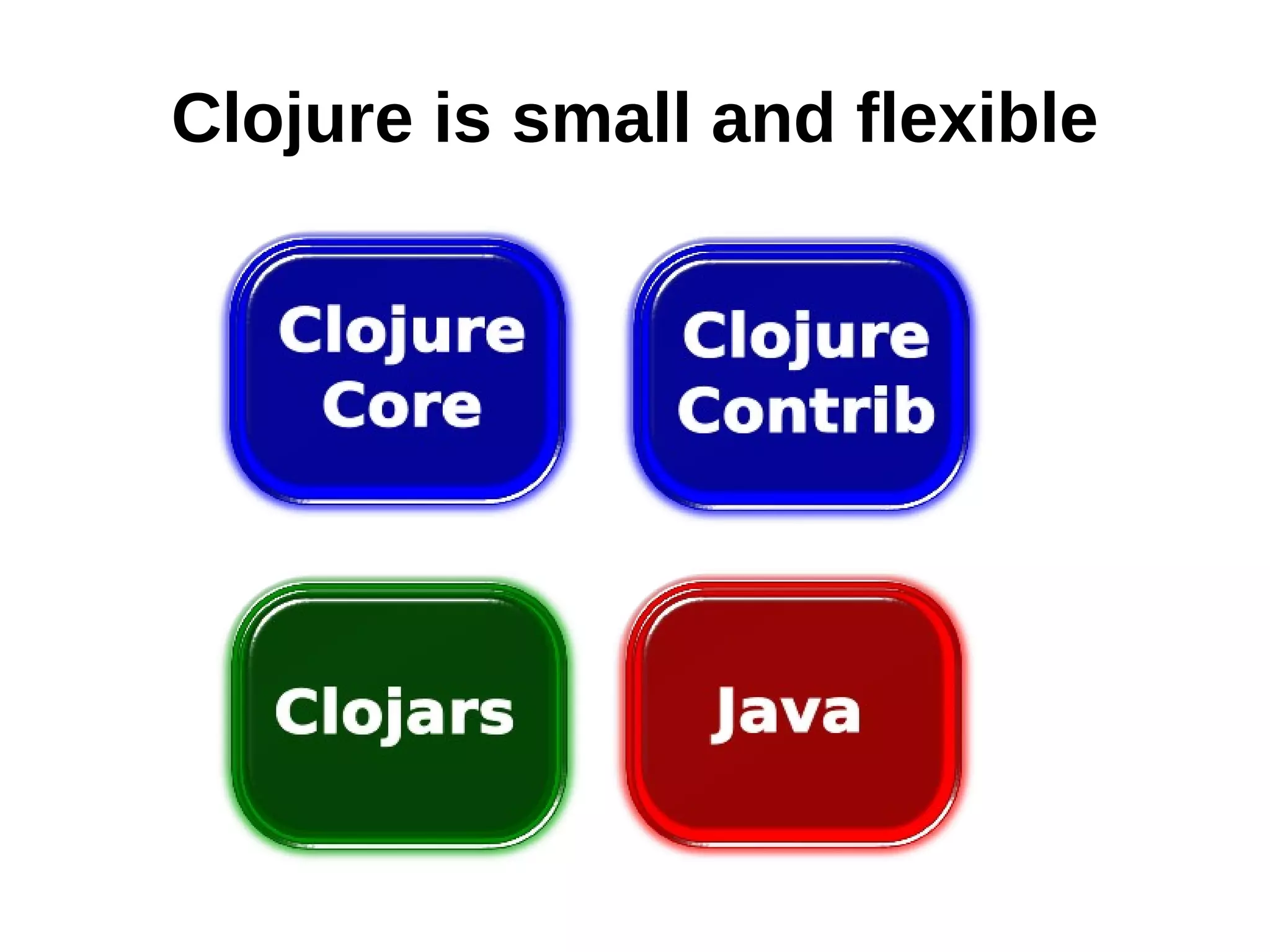

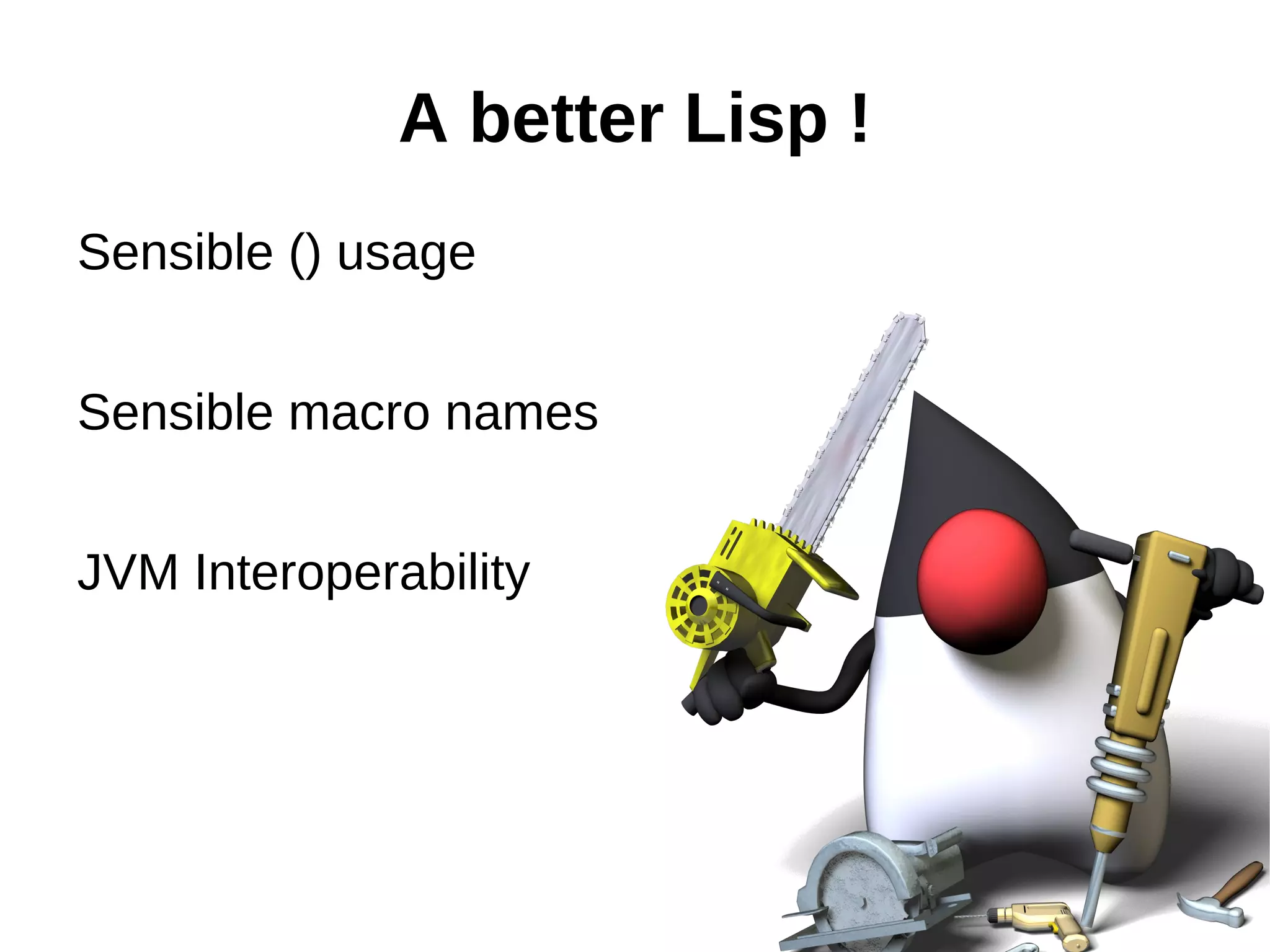


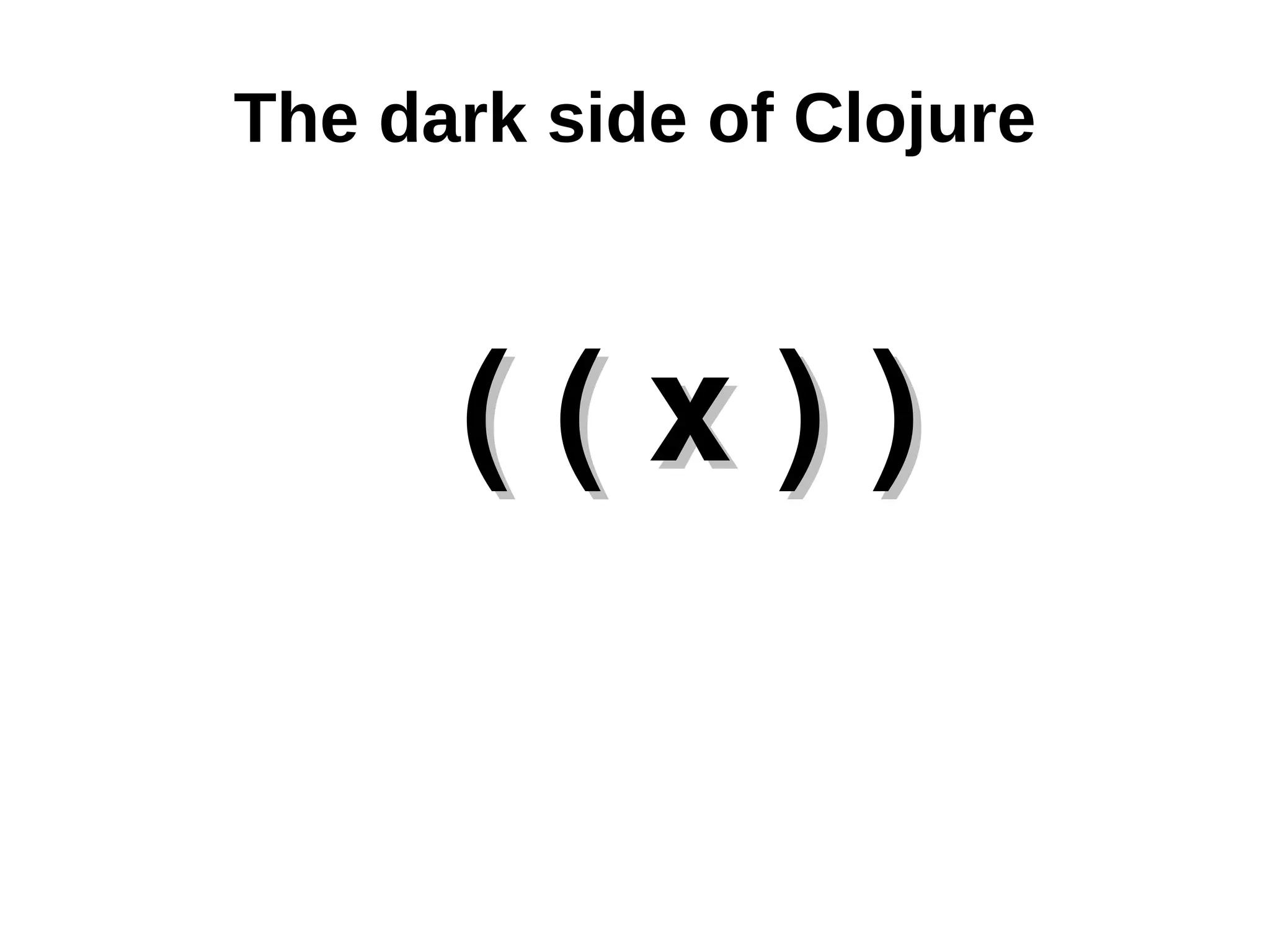
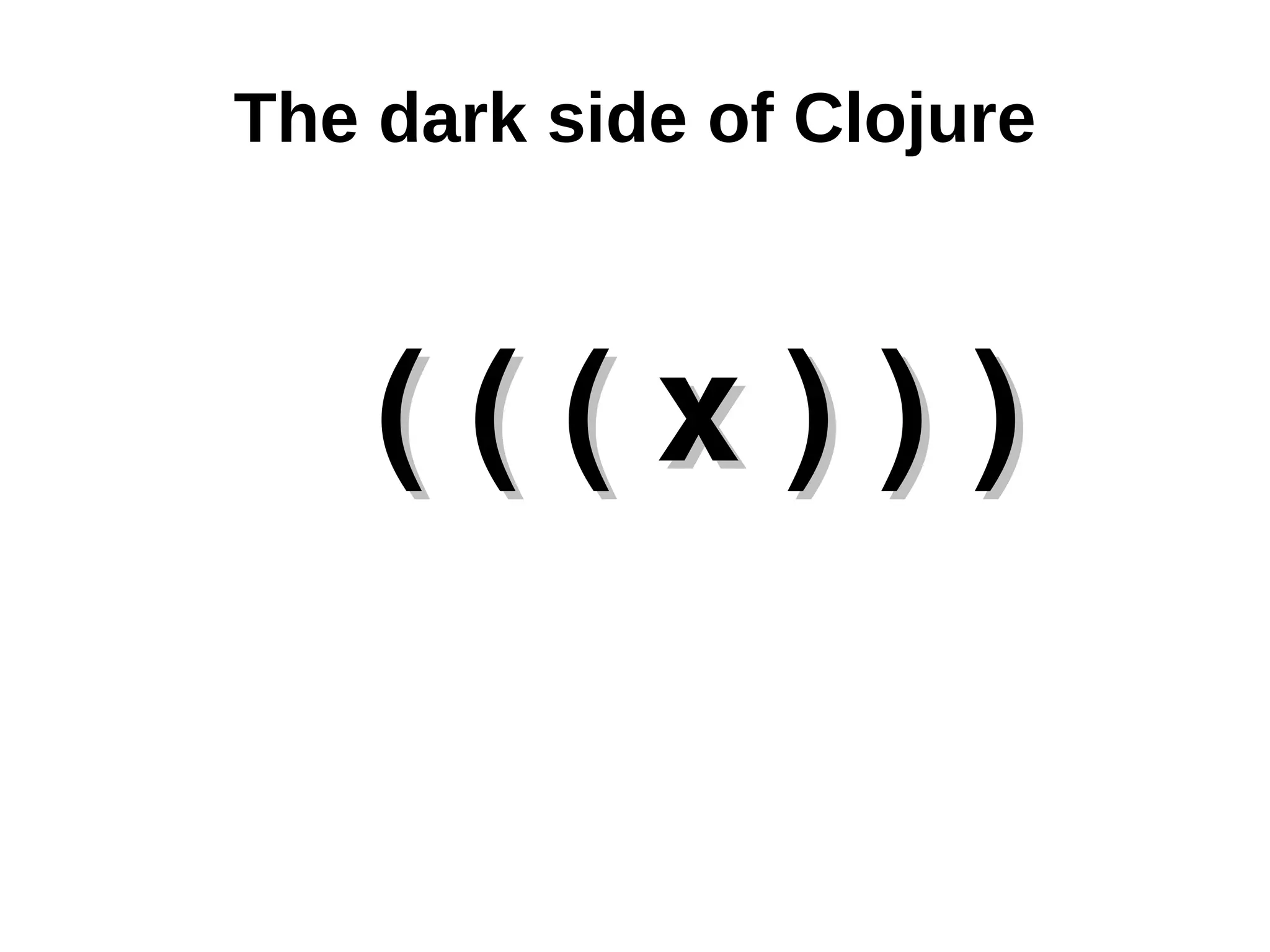
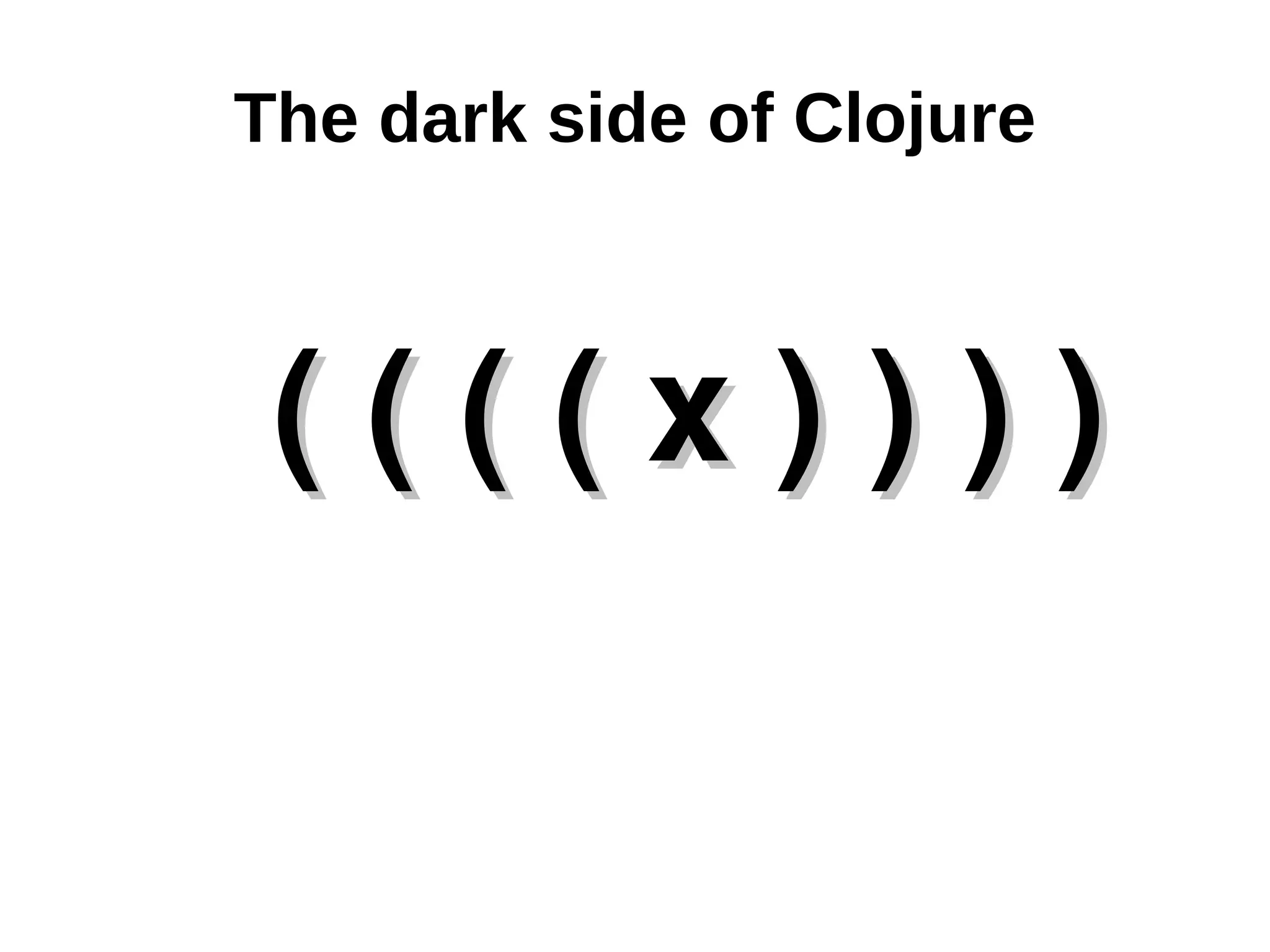

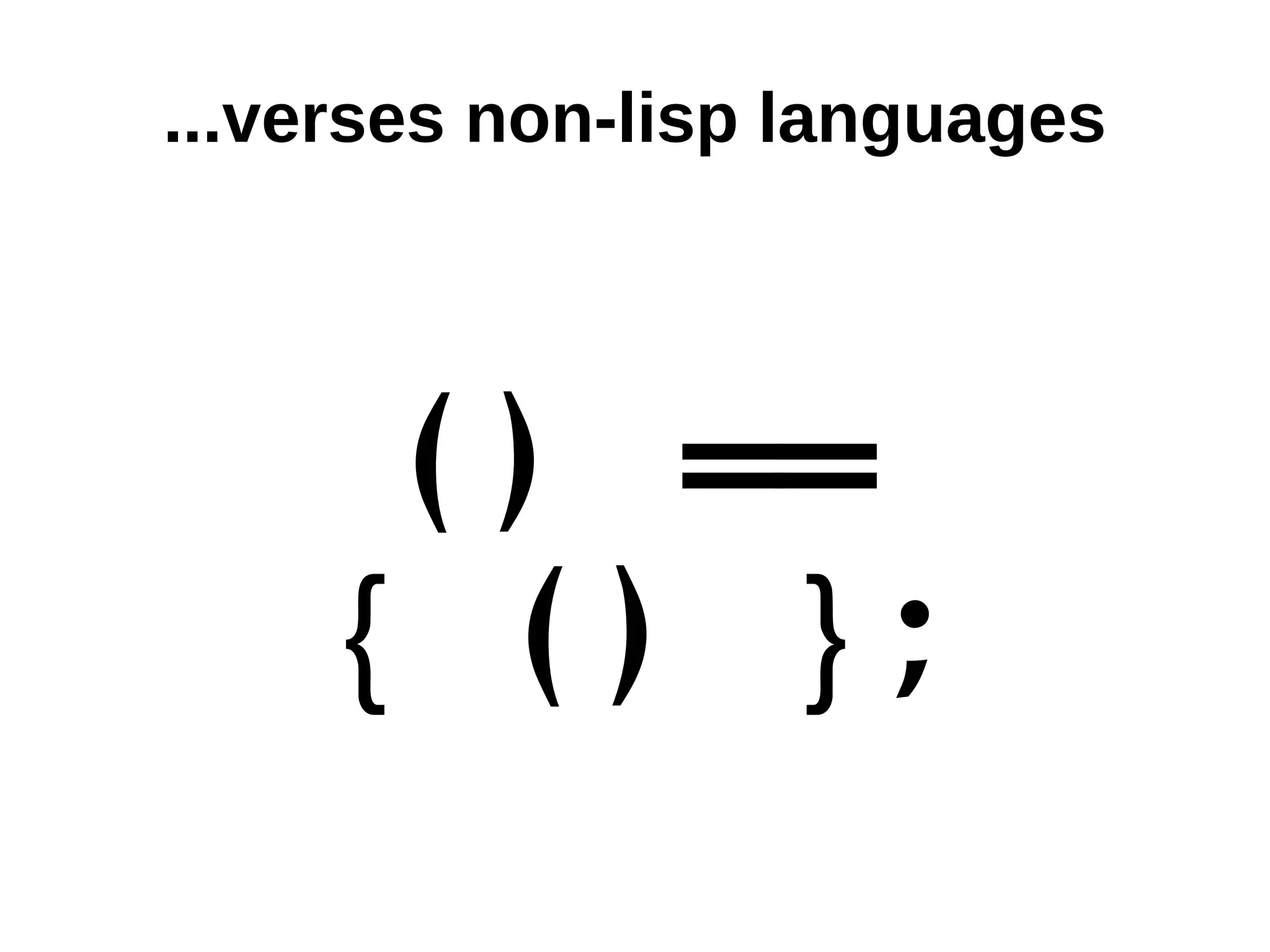
![Well nearly.... ([] ((()))) == { ( {( []) }) };](https://image.slidesharecdn.com/clojure-made-simple-skillmatter-fpx-2012-120316125310-phpapp02/75/Clojure-made-simple-Lightning-talk-15-2048.jpg)
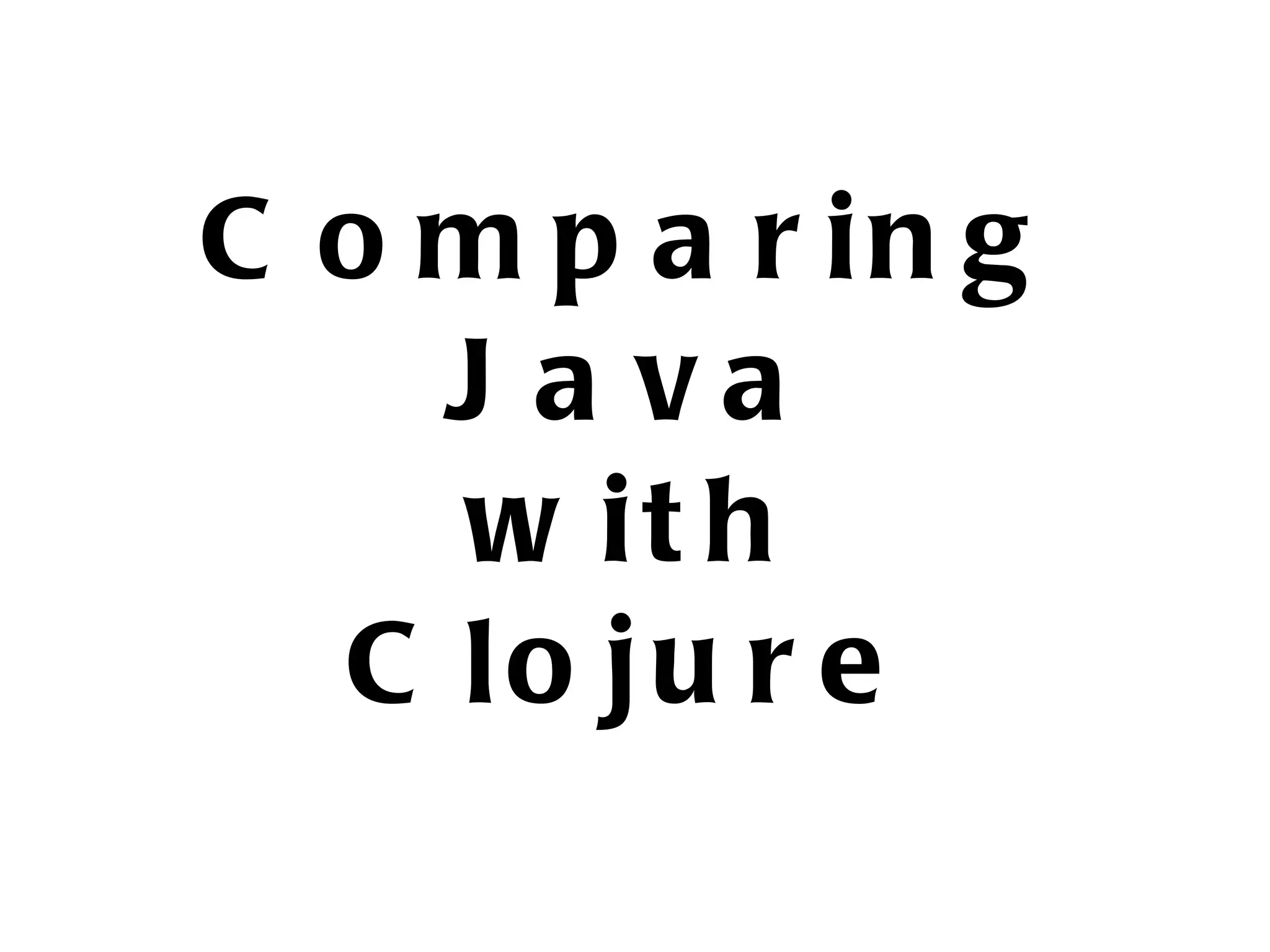
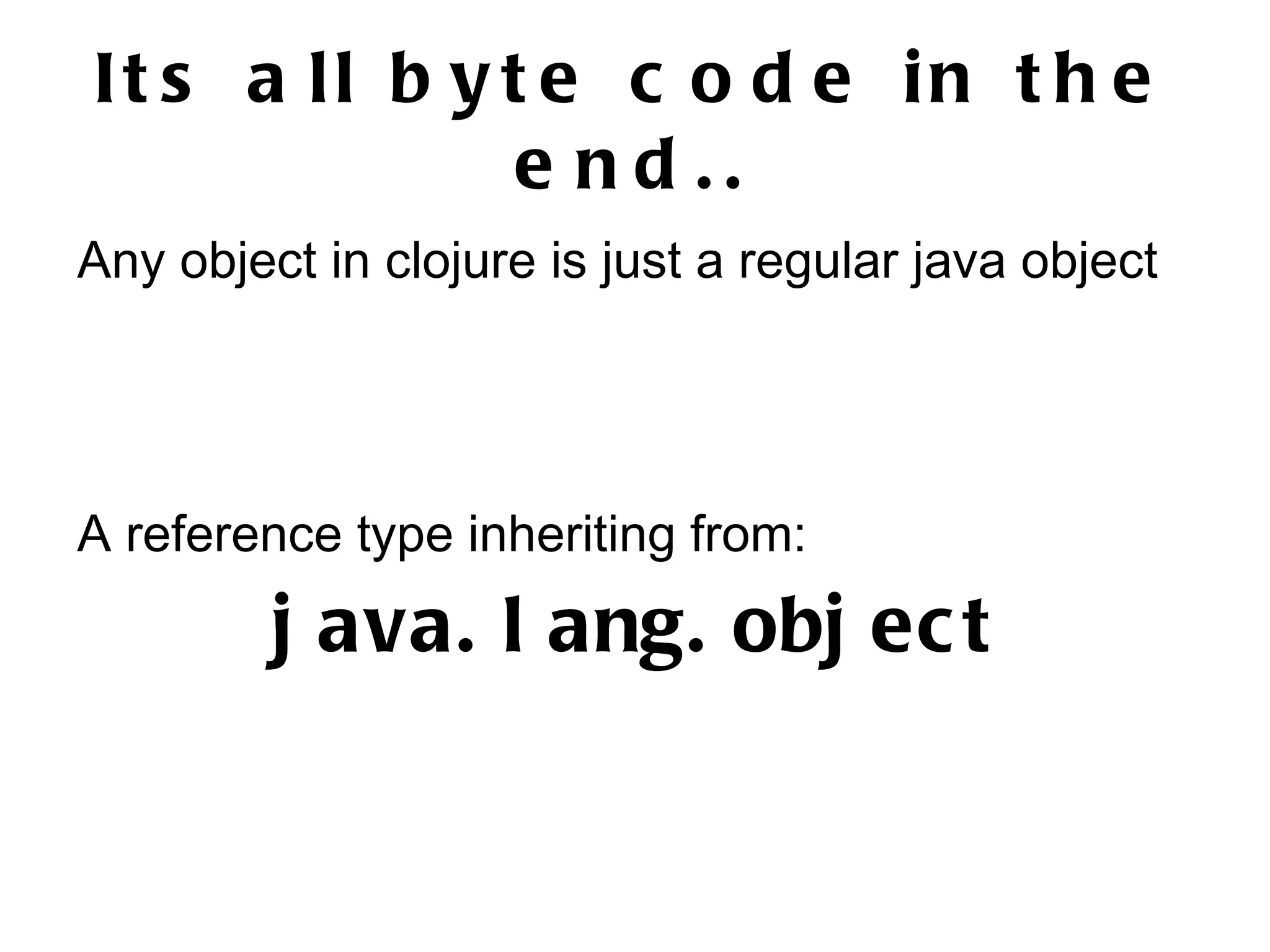
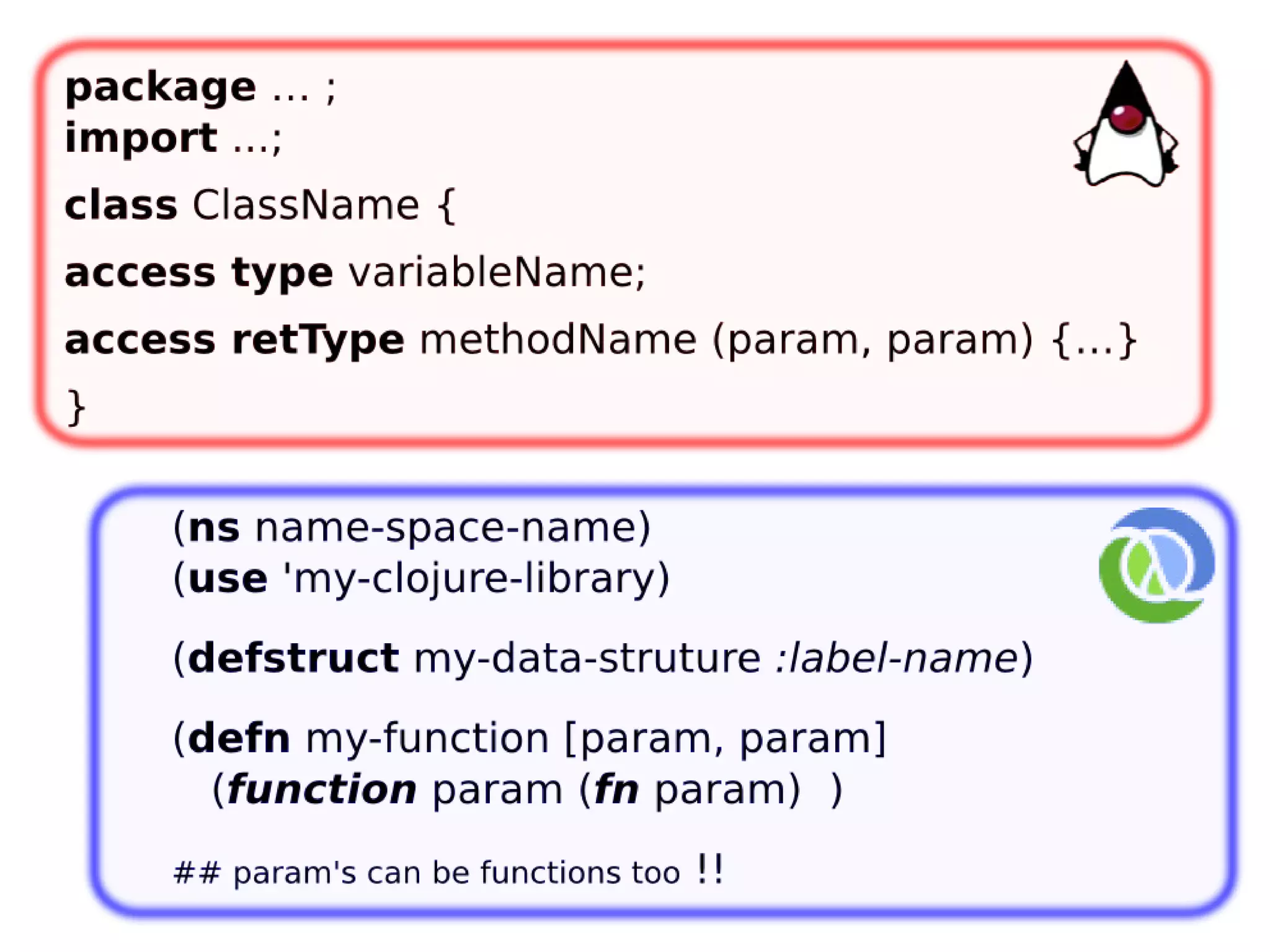


![Defining a function First principles Syntactic Sugar ( def nam e ( def n nam e ( f n [ ar gs ] [ ar gs ] ( f unc t i on- body ( f unc t i on- …) ) ) body . . . ) ) ( def n w c om m s age [ nam ] el e- es e ( pr i nt l n ( s t r “ W c om t o Cl oj ur e ” el e nam )e)](https://image.slidesharecdn.com/clojure-made-simple-skillmatter-fpx-2012-120316125310-phpapp02/75/Clojure-made-simple-Lightning-talk-21-2048.jpg)
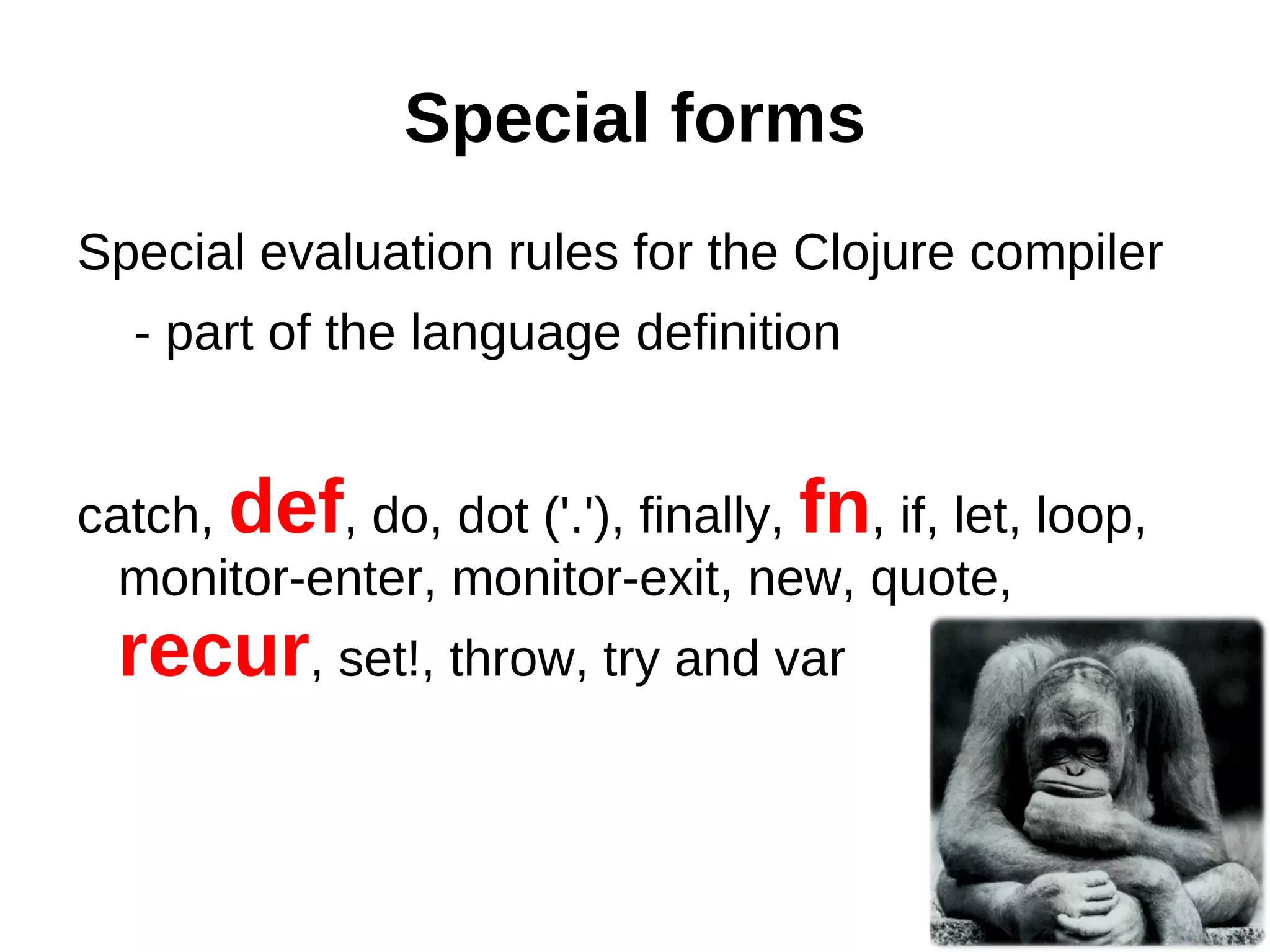
![Simple function example Define a simple function ( def n hel l o- w l d [ nam or e] ( pr i nt l n( s t r " Hel l o " nam ) ) e) Call the function in the REPL or in your code ( hel l o- w l d " j r 0c ket " ) or](https://image.slidesharecdn.com/clojure-made-simple-skillmatter-fpx-2012-120316125310-phpapp02/75/Clojure-made-simple-Lightning-talk-23-2048.jpg)
![Prefix notation ( def n s quar e- t he- number [ x] ( * x x) )](https://image.slidesharecdn.com/clojure-made-simple-skillmatter-fpx-2012-120316125310-phpapp02/75/Clojure-made-simple-Lightning-talk-24-2048.jpg)
![“Overloading” functions ( def n make ([ ] ; do t h e f o l l o wi n g f u n c t i o n i f n o ar g s ( s t r uc t vec t or 0 0) ) ( [ x y] ; d o i f x an d y ar e ar g u me n t s ( s t r uc t vec t or x y) ) )](https://image.slidesharecdn.com/clojure-made-simple-skillmatter-fpx-2012-120316125310-phpapp02/75/Clojure-made-simple-Lightning-talk-25-2048.jpg)


![Vectors – hashed ordered list [ : m r i x- c har ac t er s [ : neo at : m pheus : t r i ni t y : s m t h] ] or i ( f i r s t [ : n e o : mo r p h e u s : t r i n i t y : s mi t h ] ) ( nt h [ : mat r i x : b ab yl o n 5 : f i r e f l y : s t ar g at e ] 2 ) ( c onc at [ : n e o ] [ : t r i n i t y] )](https://image.slidesharecdn.com/clojure-made-simple-skillmatter-fpx-2012-120316125310-phpapp02/75/Clojure-made-simple-Lightning-talk-28-2048.jpg)
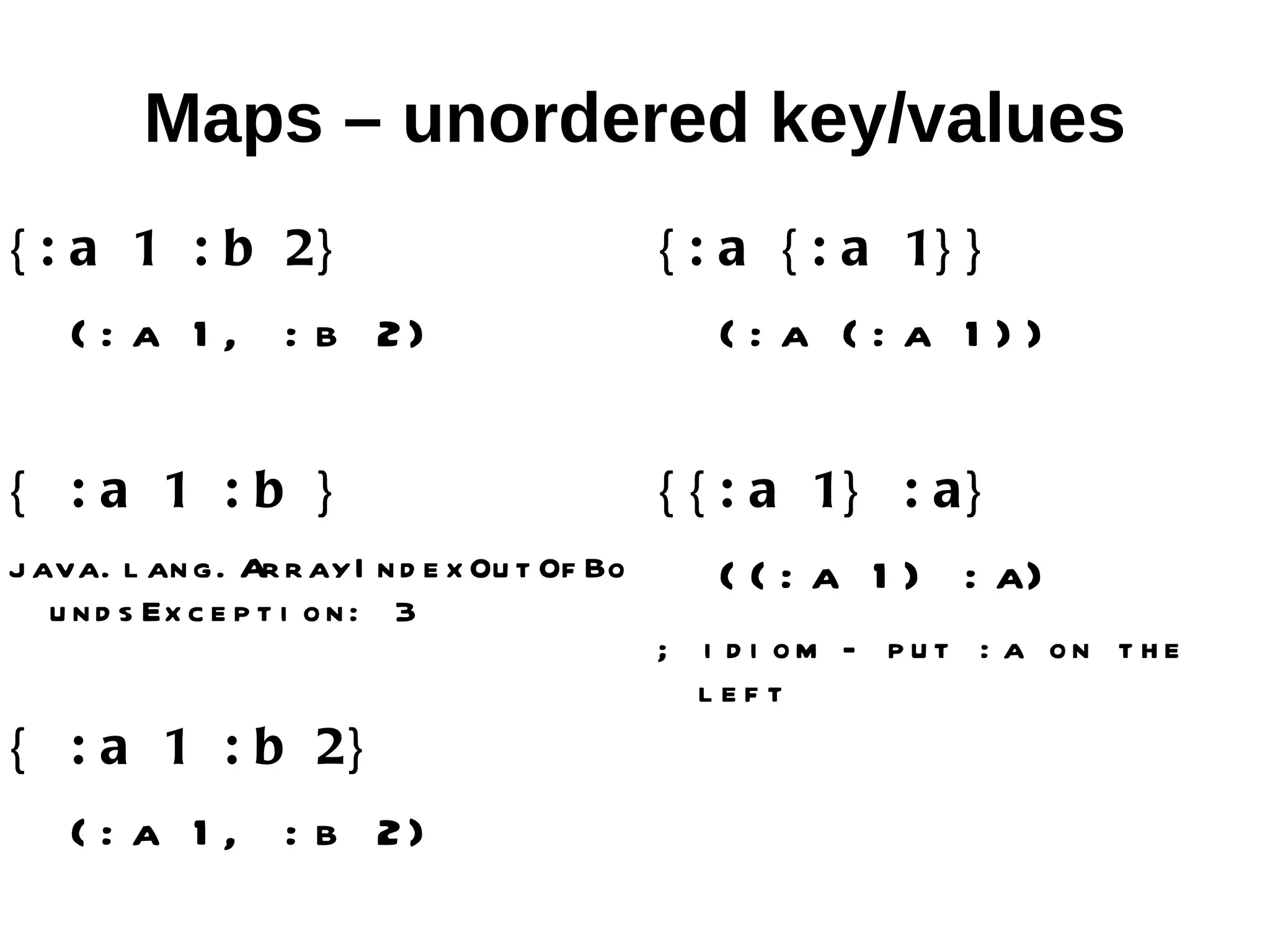
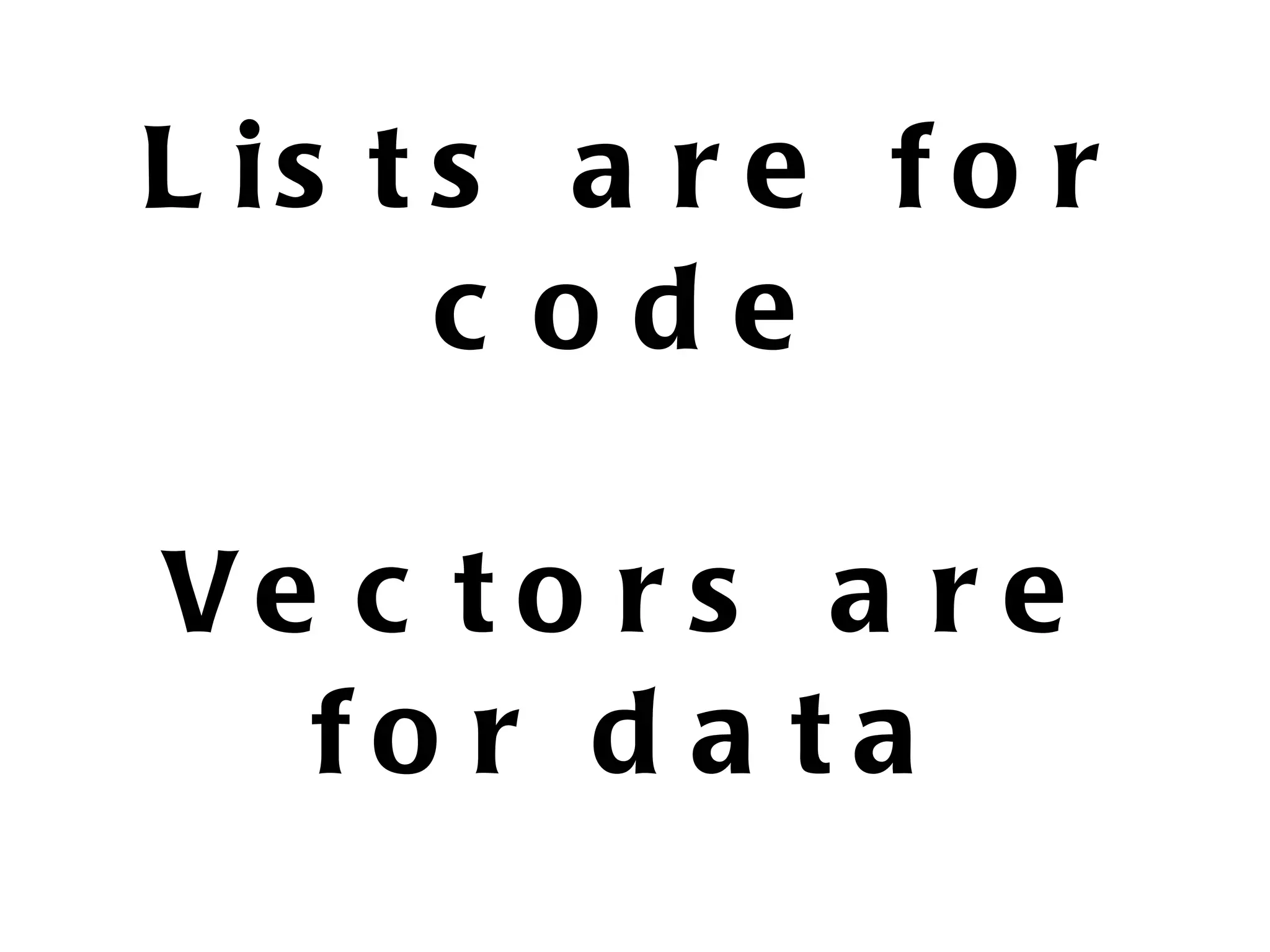
![Working with data (last [1 1 2 3 5 8]) (doc last) (defn penultimate [x] (last (butlast x)) ) (doc butlast) (penultimate [1 2 3 4 5])](https://image.slidesharecdn.com/clojure-made-simple-skillmatter-fpx-2012-120316125310-phpapp02/75/Clojure-made-simple-Lightning-talk-31-2048.jpg)
![And more... (nth [1 1 2 3 5 8] 2) (count [1 1 2 3 5 8]) (reverse [1 1 2 3 5 8]) (defn palindrome? [x] Proposition – naming (= x (reverse x)) ) convention](https://image.slidesharecdn.com/clojure-made-simple-skillmatter-fpx-2012-120316125310-phpapp02/75/Clojure-made-simple-Lightning-talk-32-2048.jpg)
![Even more (flatten [[1 1] 2 [3 [5 8]]]) (compress "aaaabccaadeeee") (encode "aaaabccaadeeee") (replicate 10 "a")](https://image.slidesharecdn.com/clojure-made-simple-skillmatter-fpx-2012-120316125310-phpapp02/75/Clojure-made-simple-Lightning-talk-33-2048.jpg)
![Defining a data structure ( def m dat a- s t r uc t ur e y- [ dat a ] ) ( def days - of - t he- week [ “Monday” “ Tues day” “W ednes day” ] )](https://image.slidesharecdn.com/clojure-made-simple-skillmatter-fpx-2012-120316125310-phpapp02/75/Clojure-made-simple-Lightning-talk-34-2048.jpg)
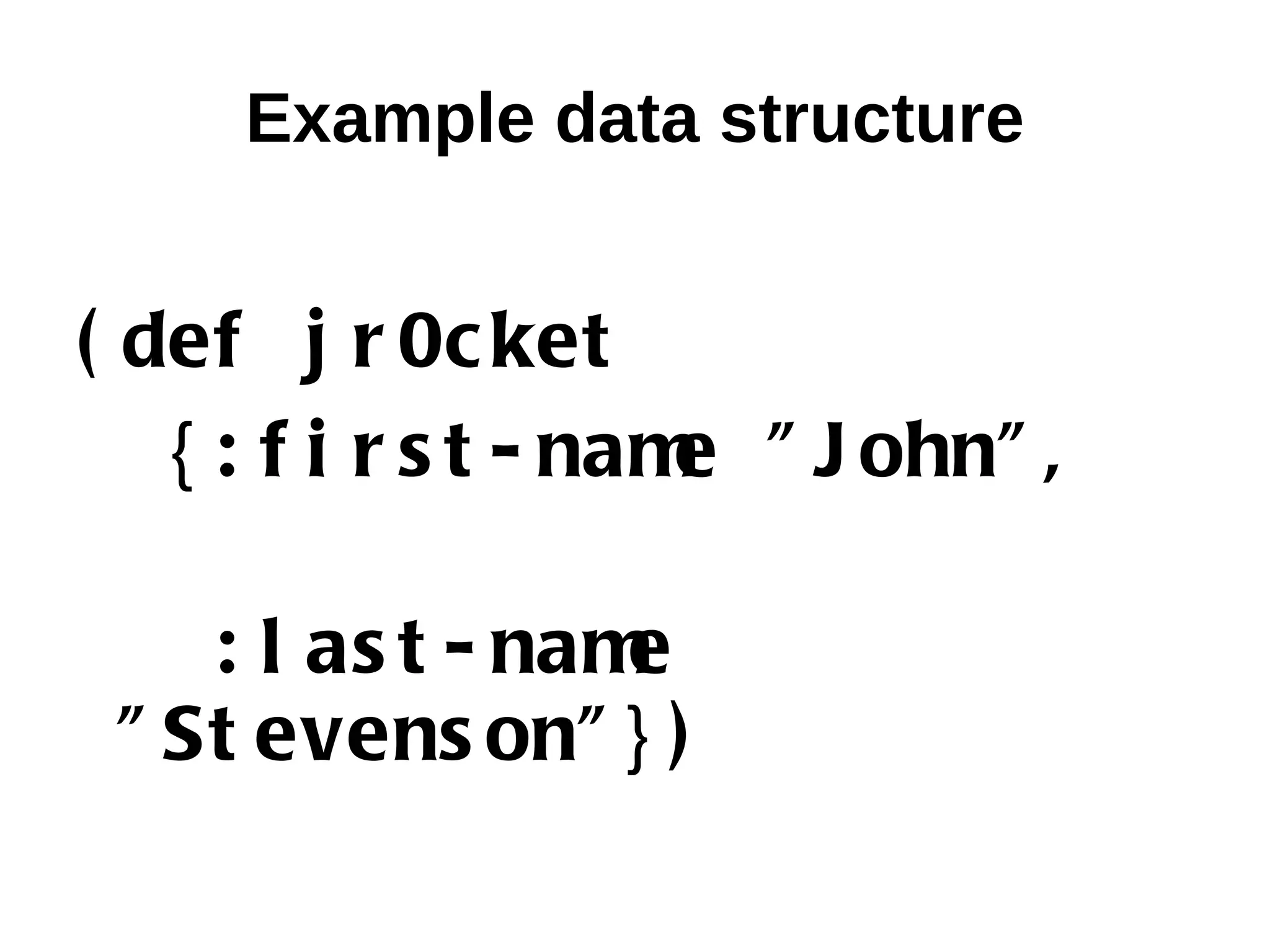
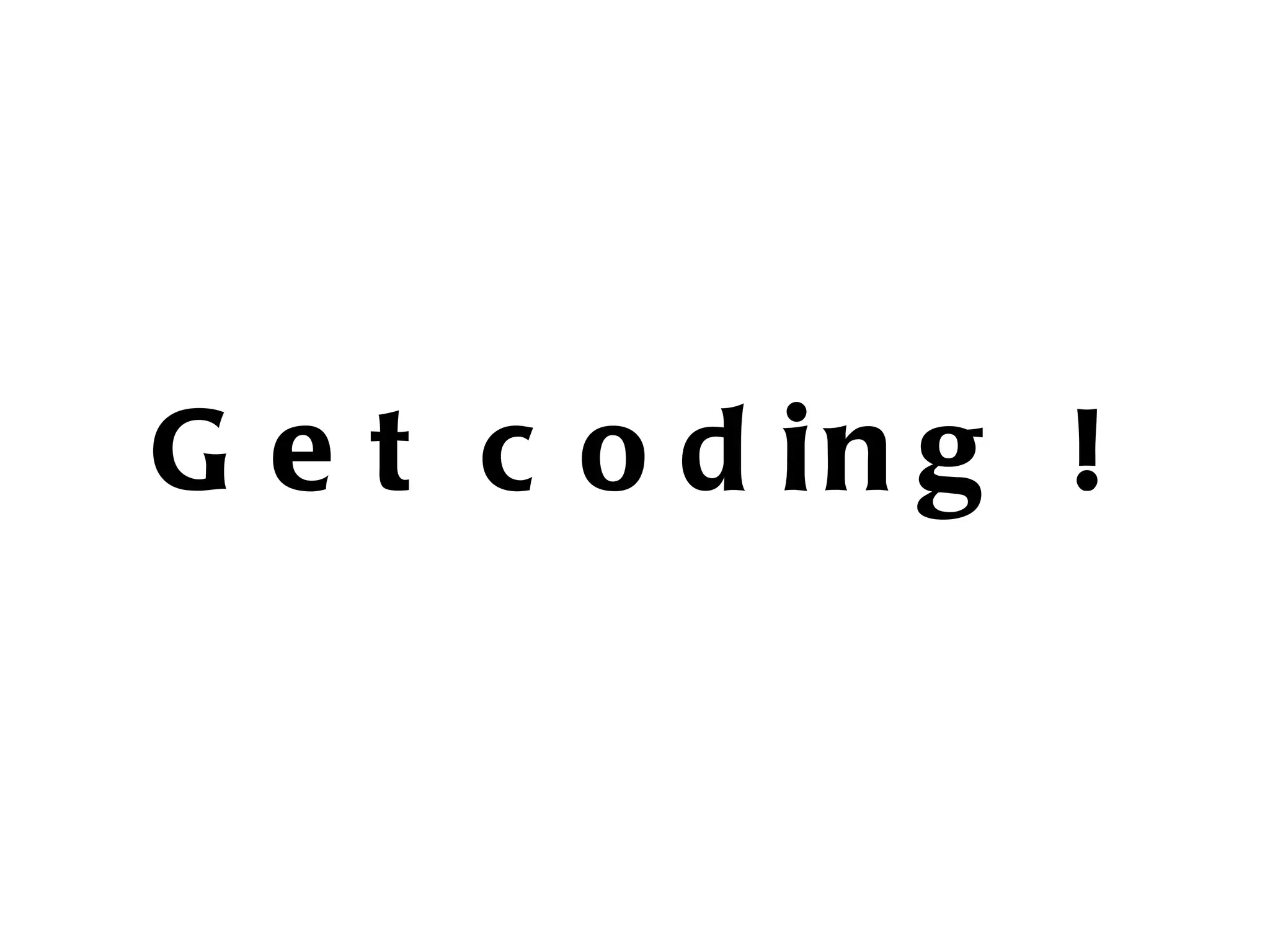
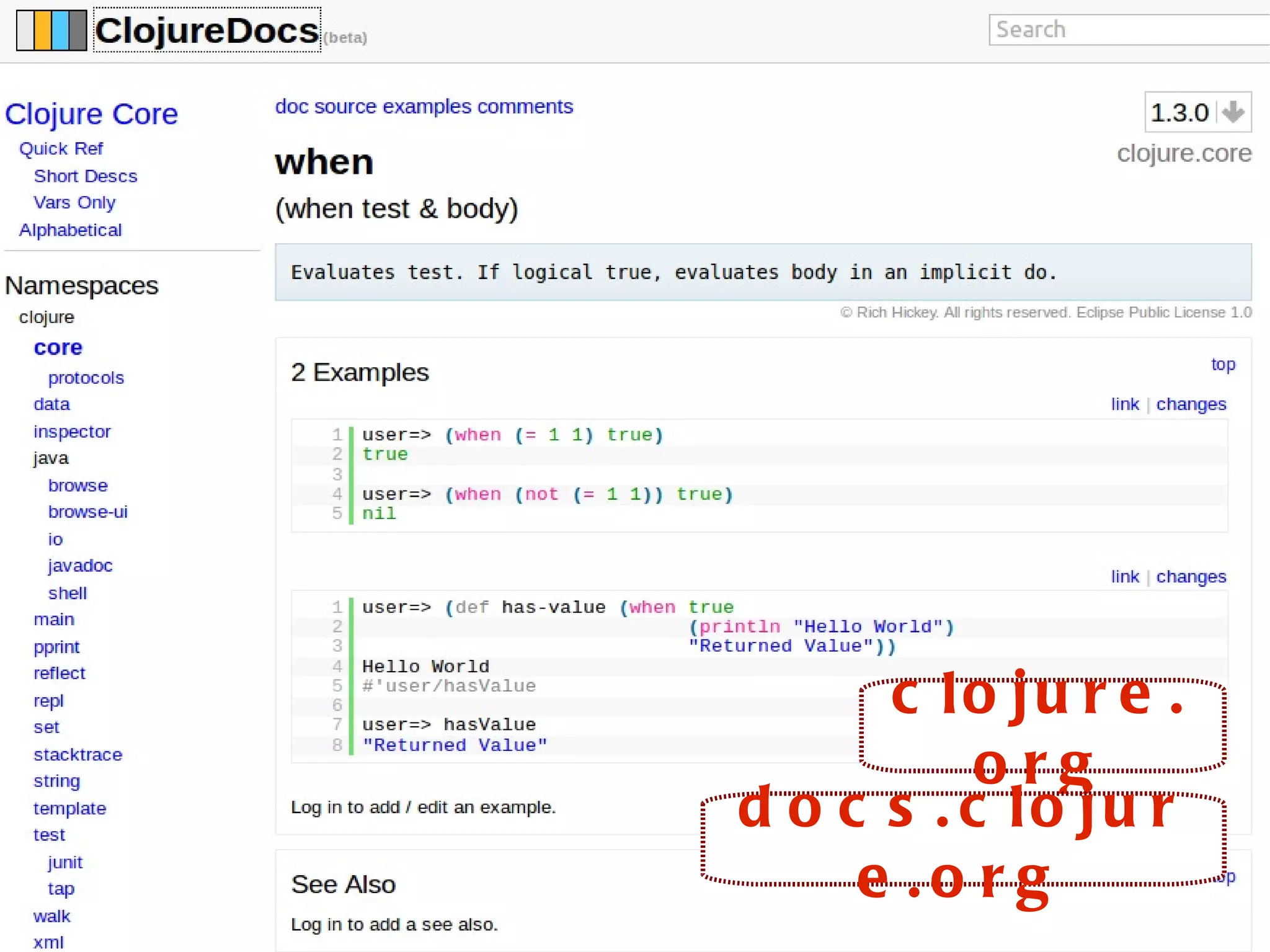
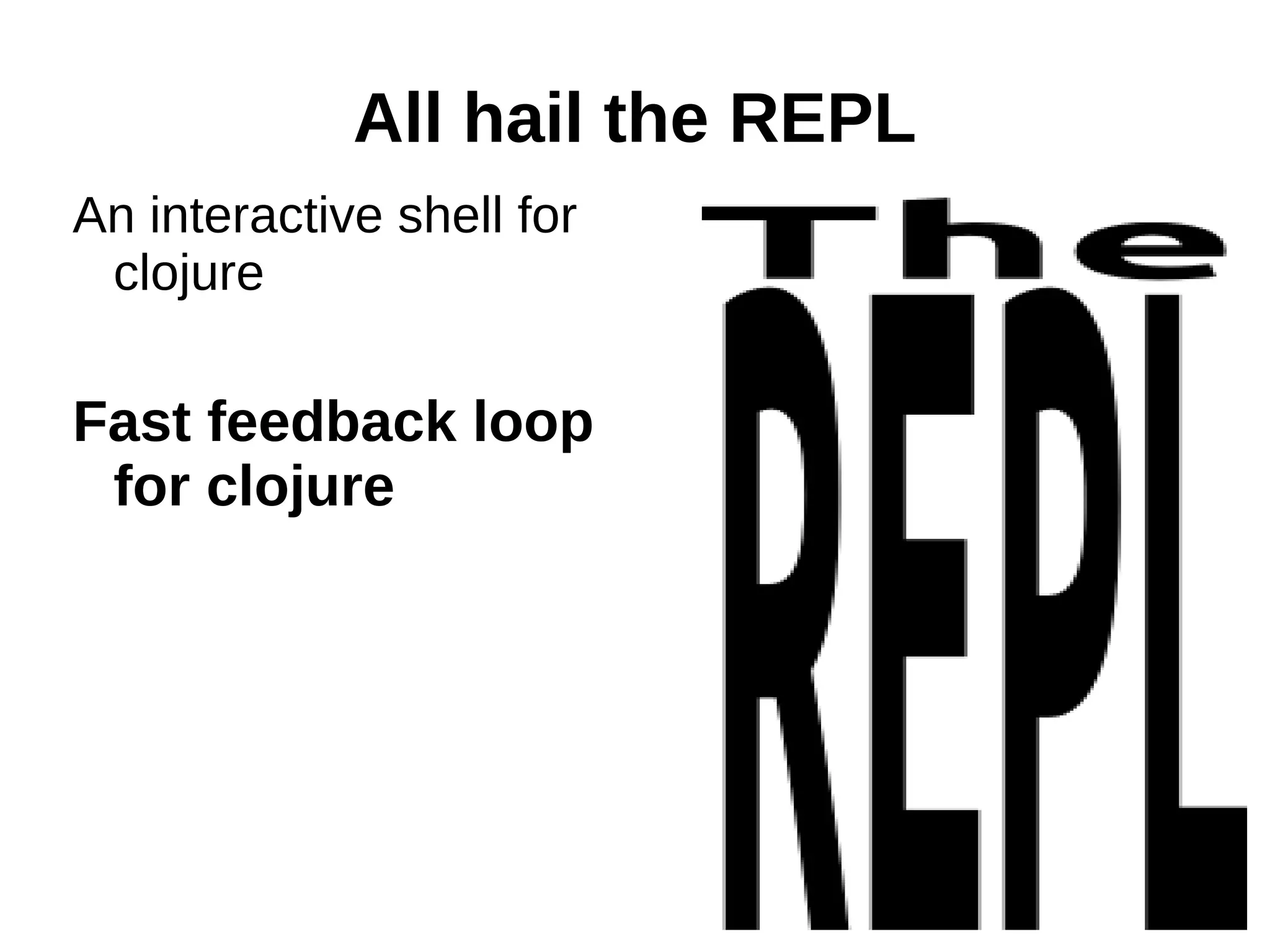
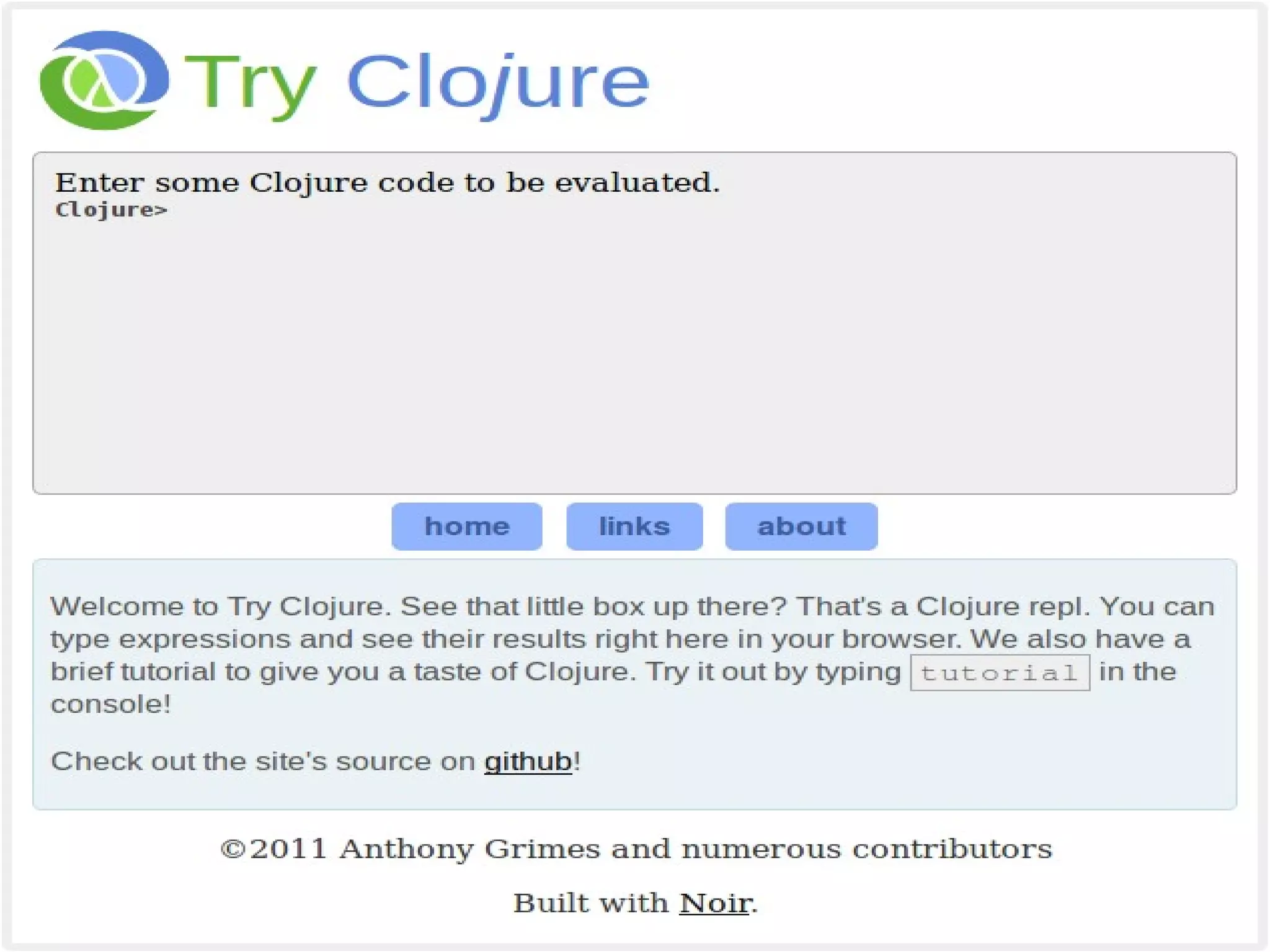
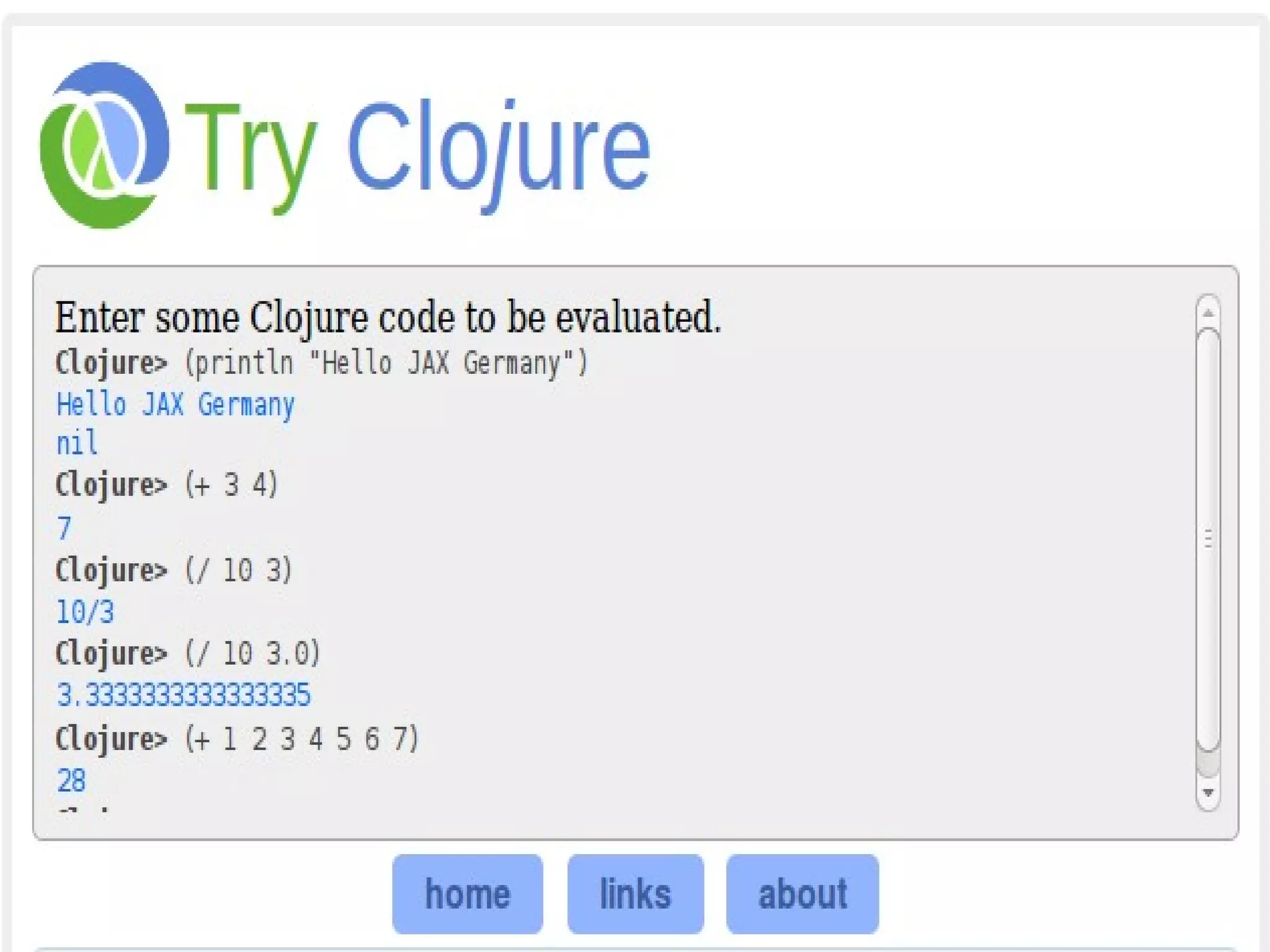
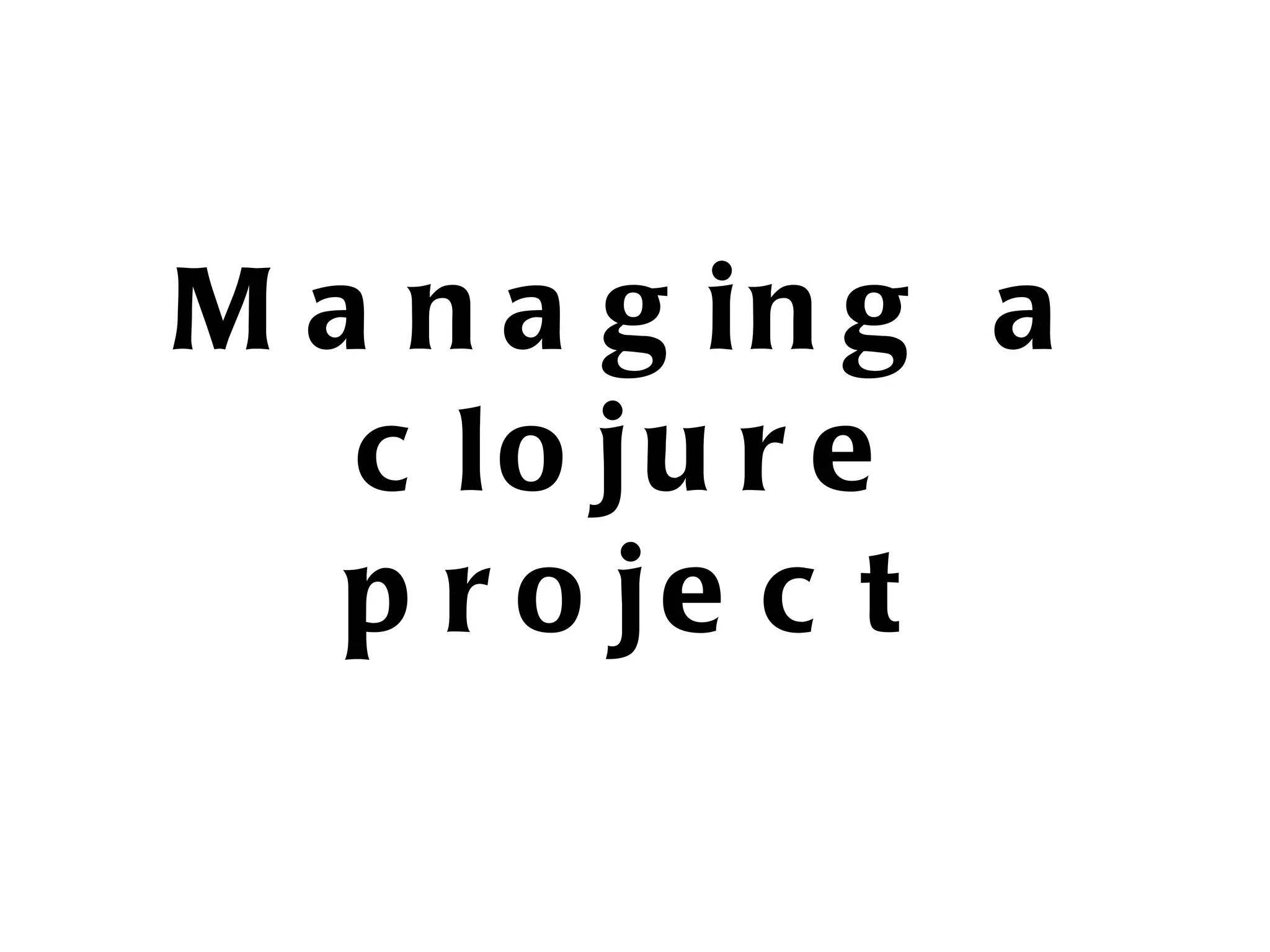
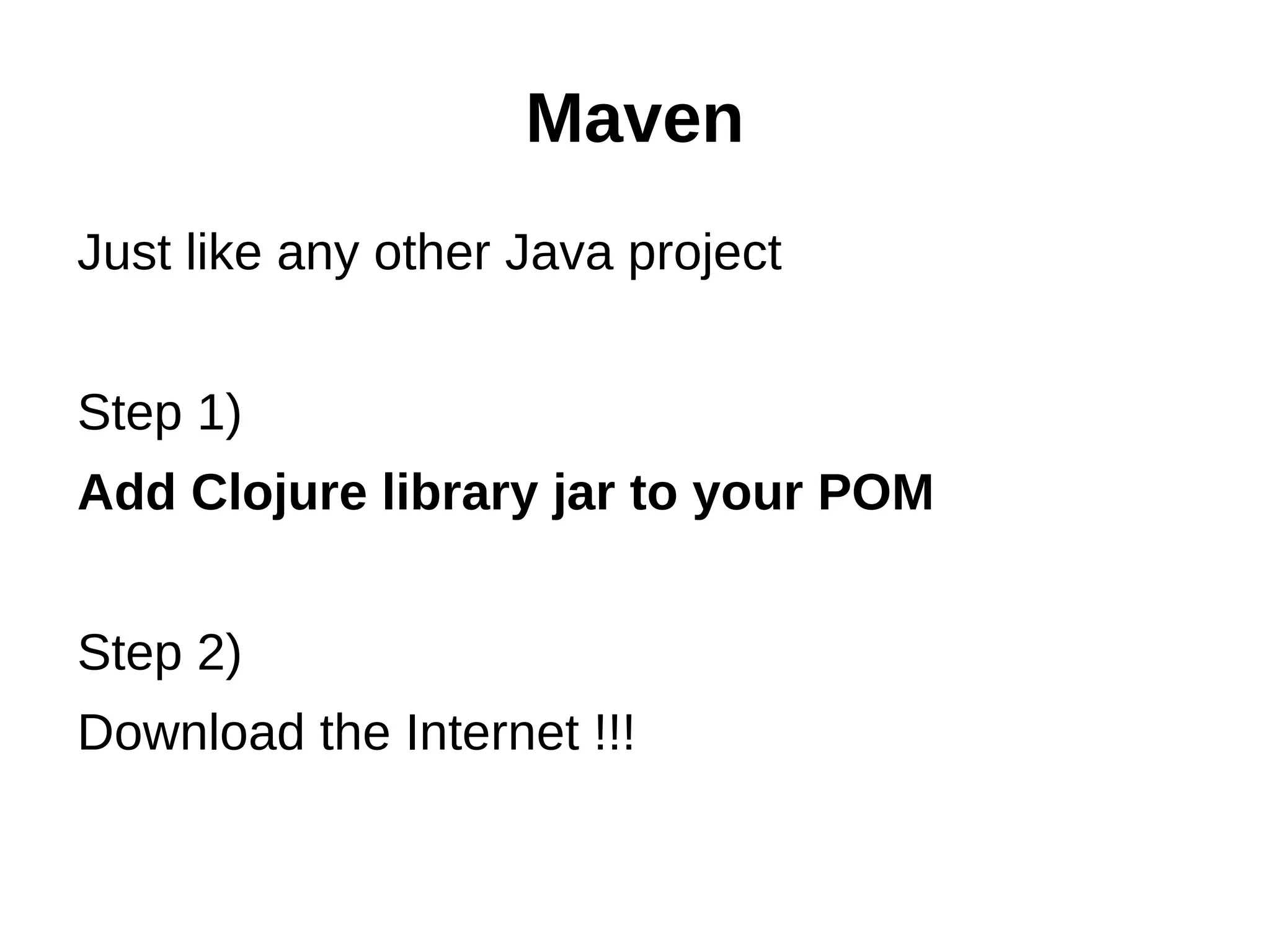

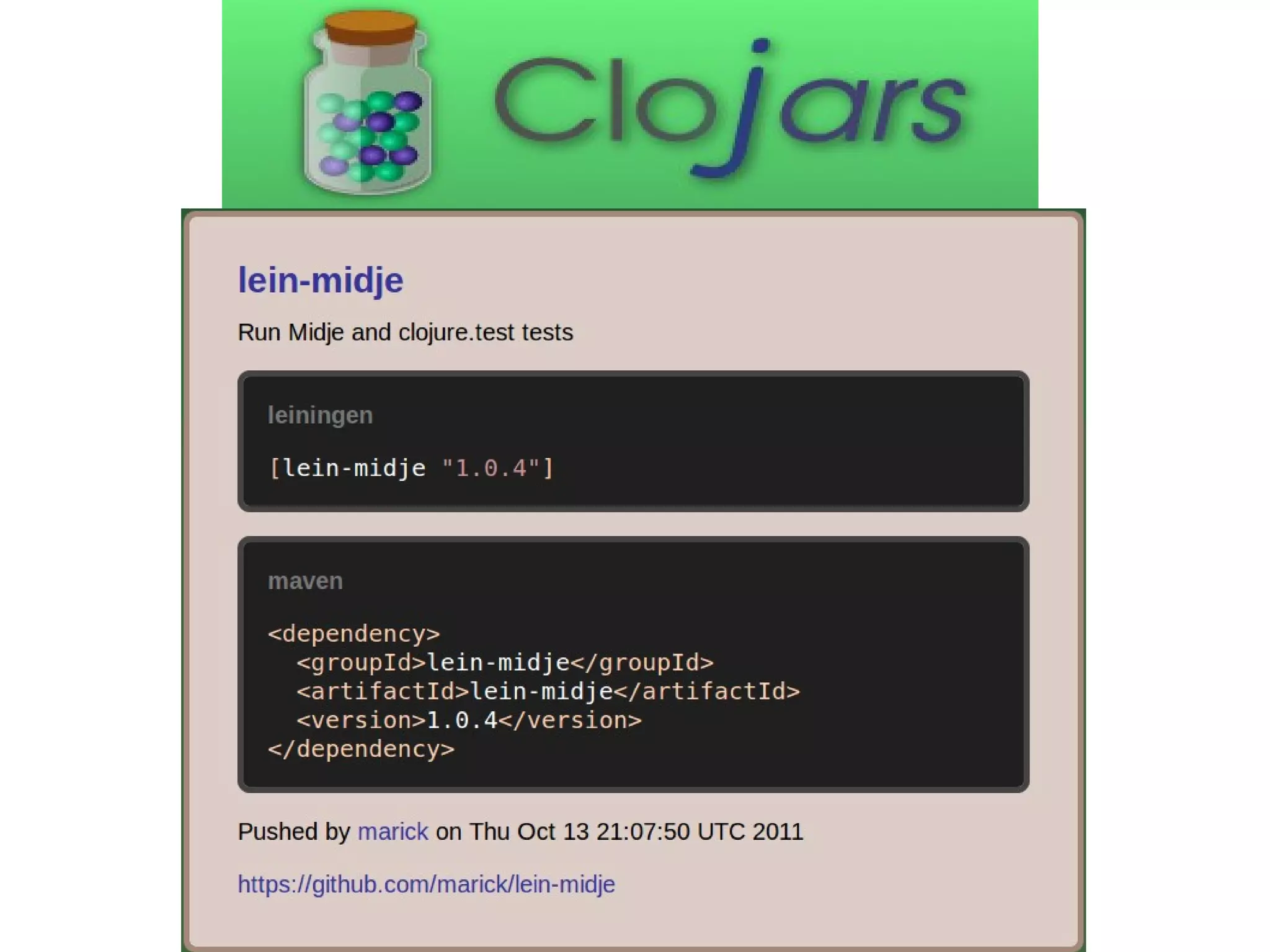

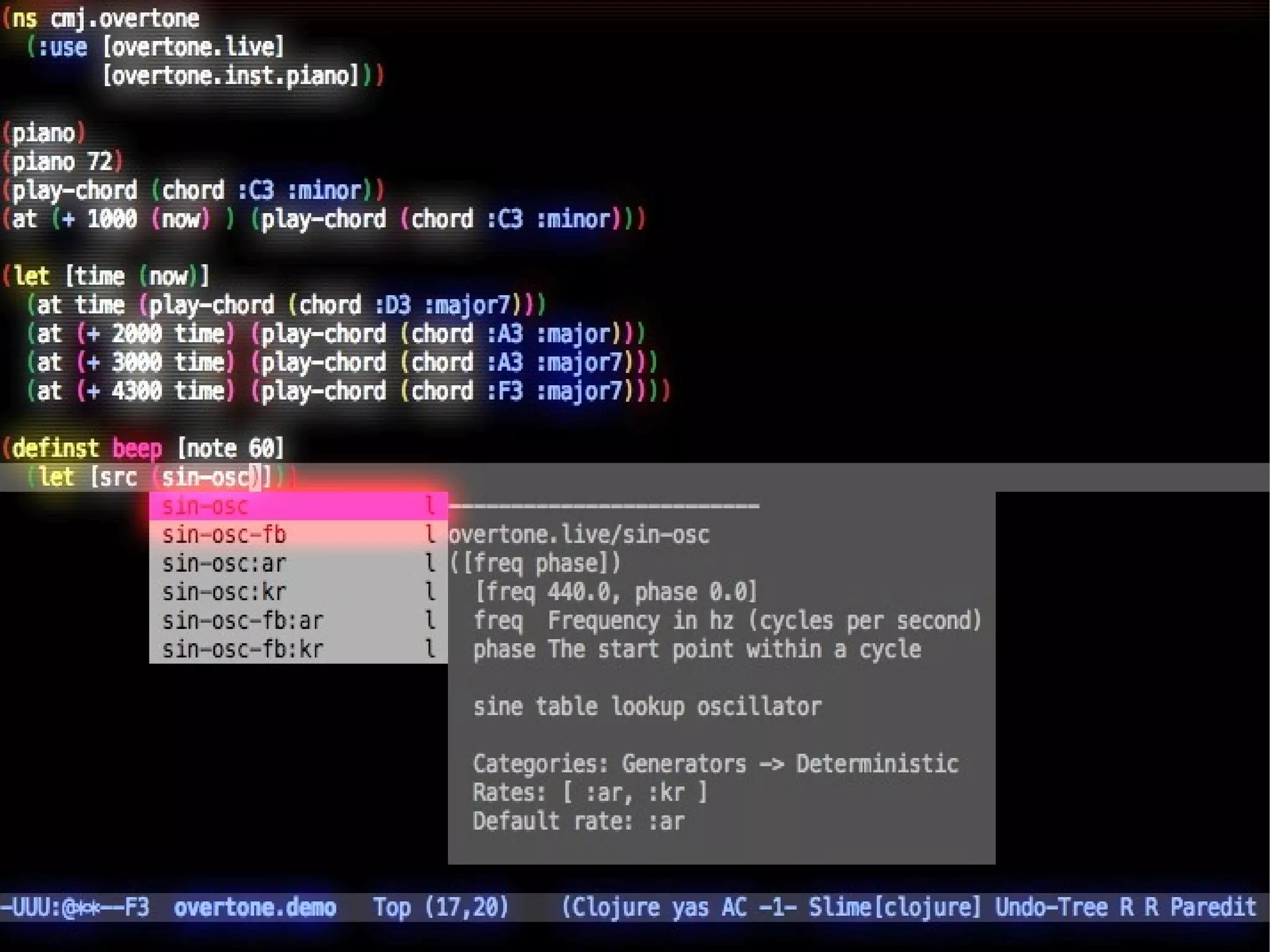
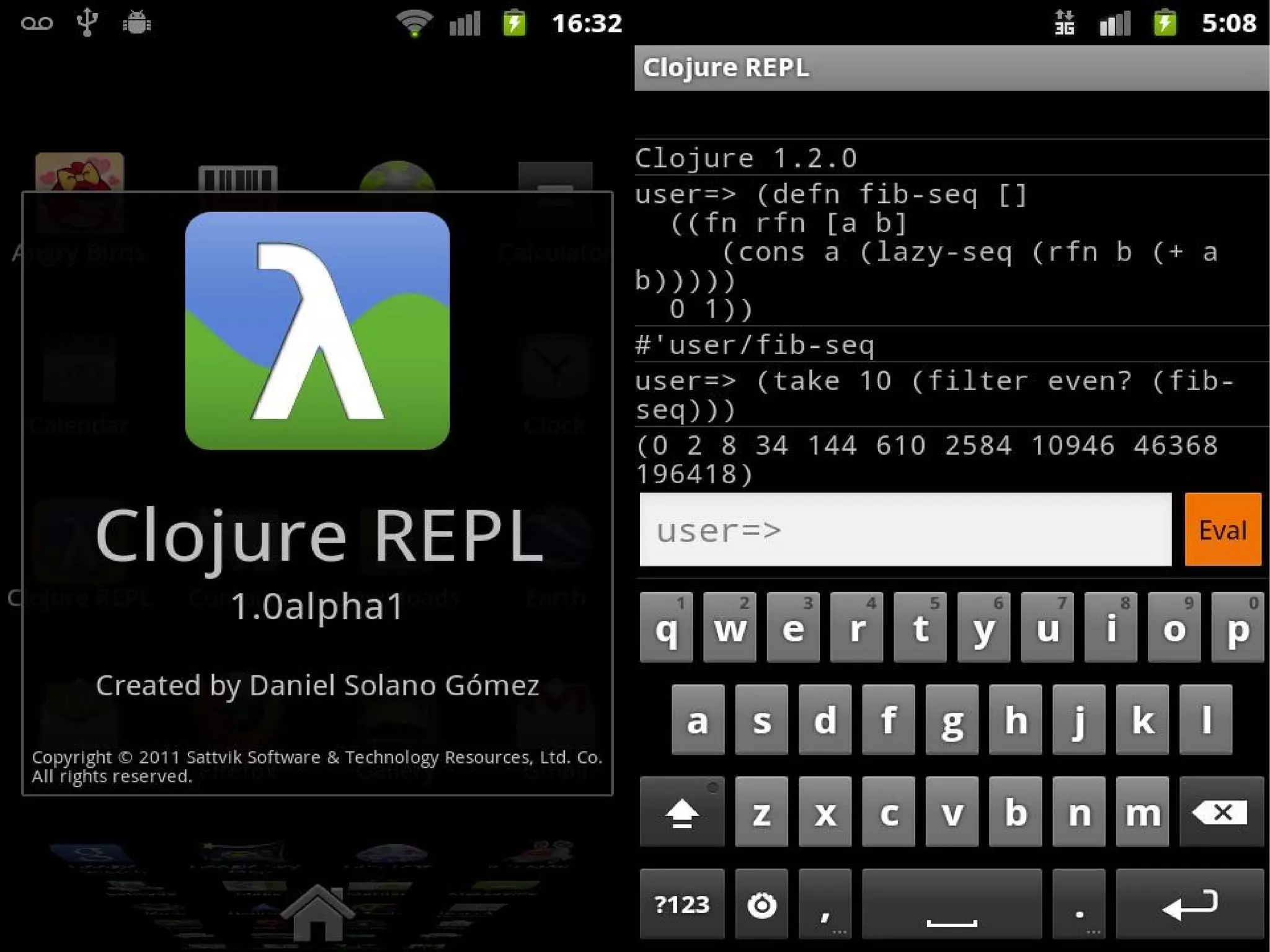
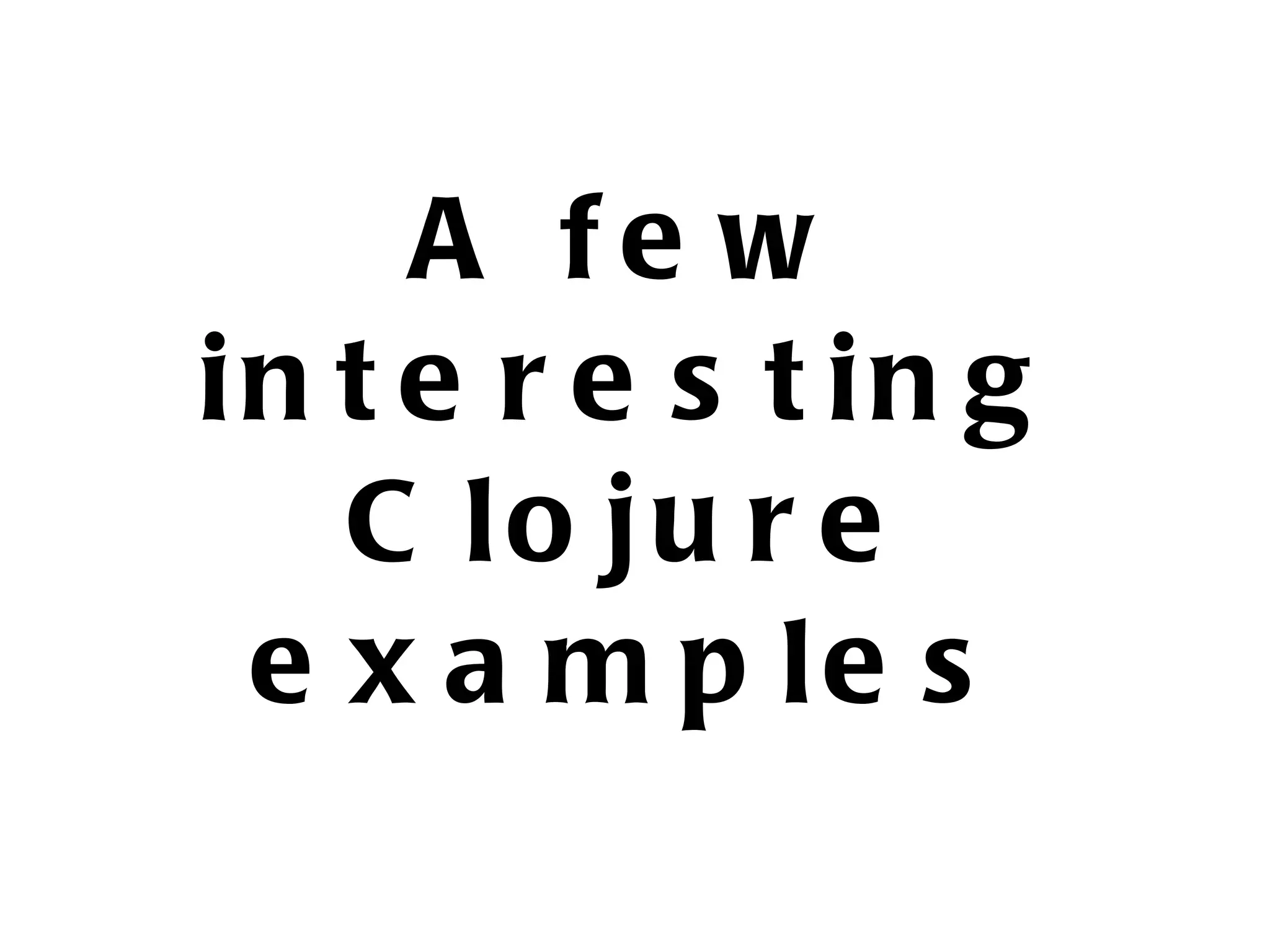

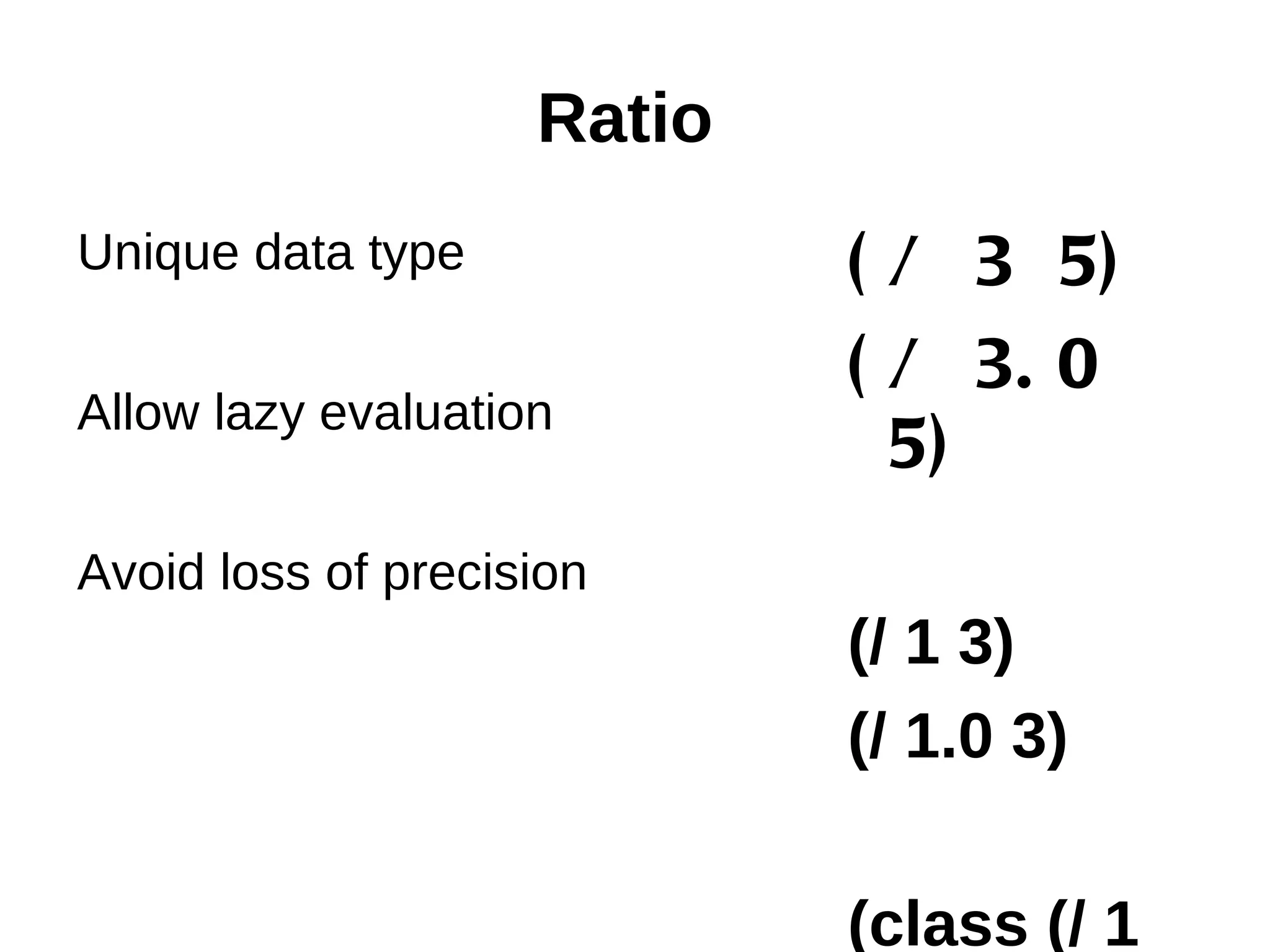
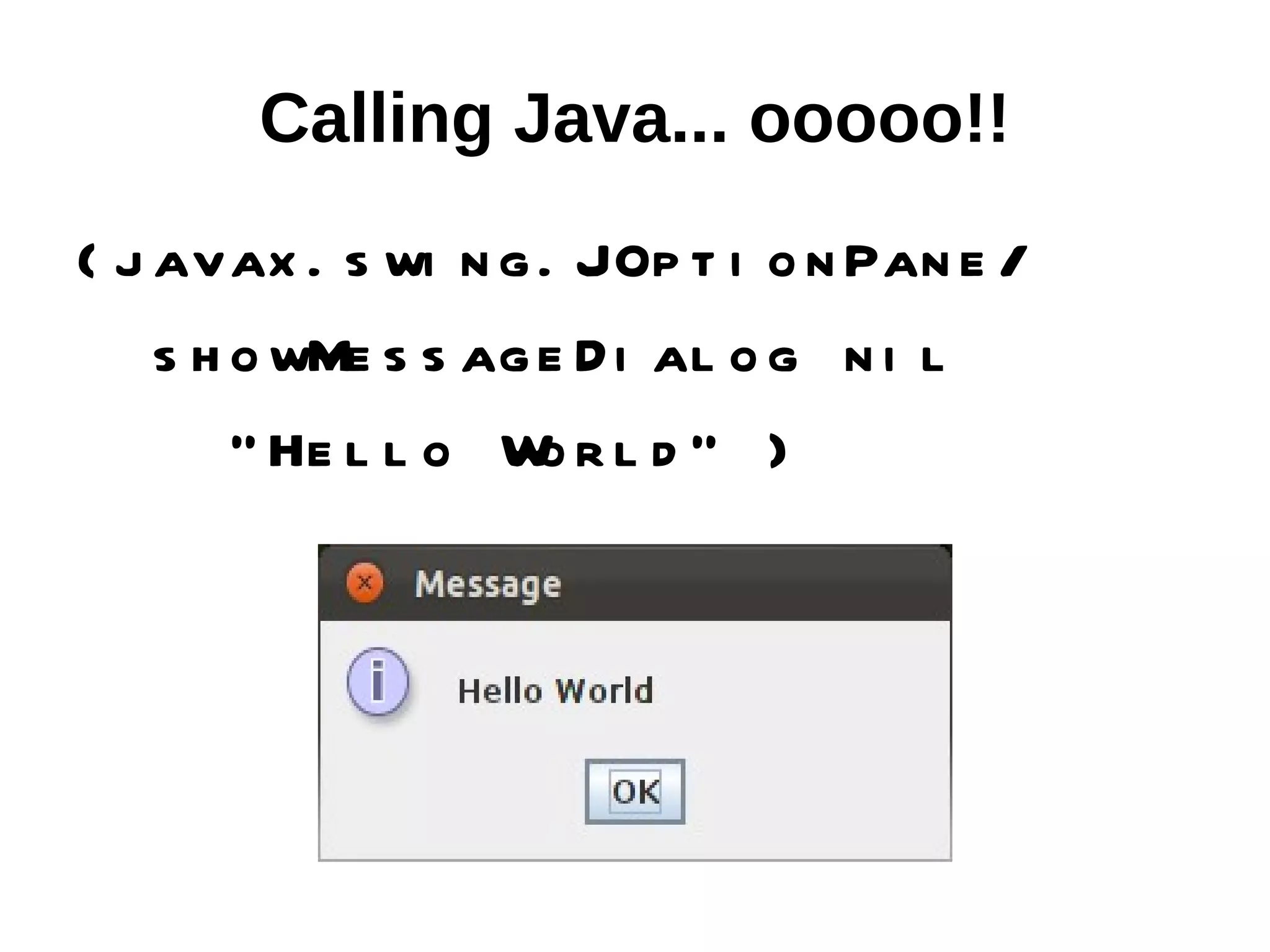
![Importing Java into Clojure ( ns dr aw ng- dem i o ( : i m t [ j avax. s w ng J panel por i J Fr am e] [ j ava. awt Di m i on] ) ) ens](https://image.slidesharecdn.com/clojure-made-simple-skillmatter-fpx-2012-120316125310-phpapp02/75/Clojure-made-simple-Lightning-talk-52-2048.jpg)
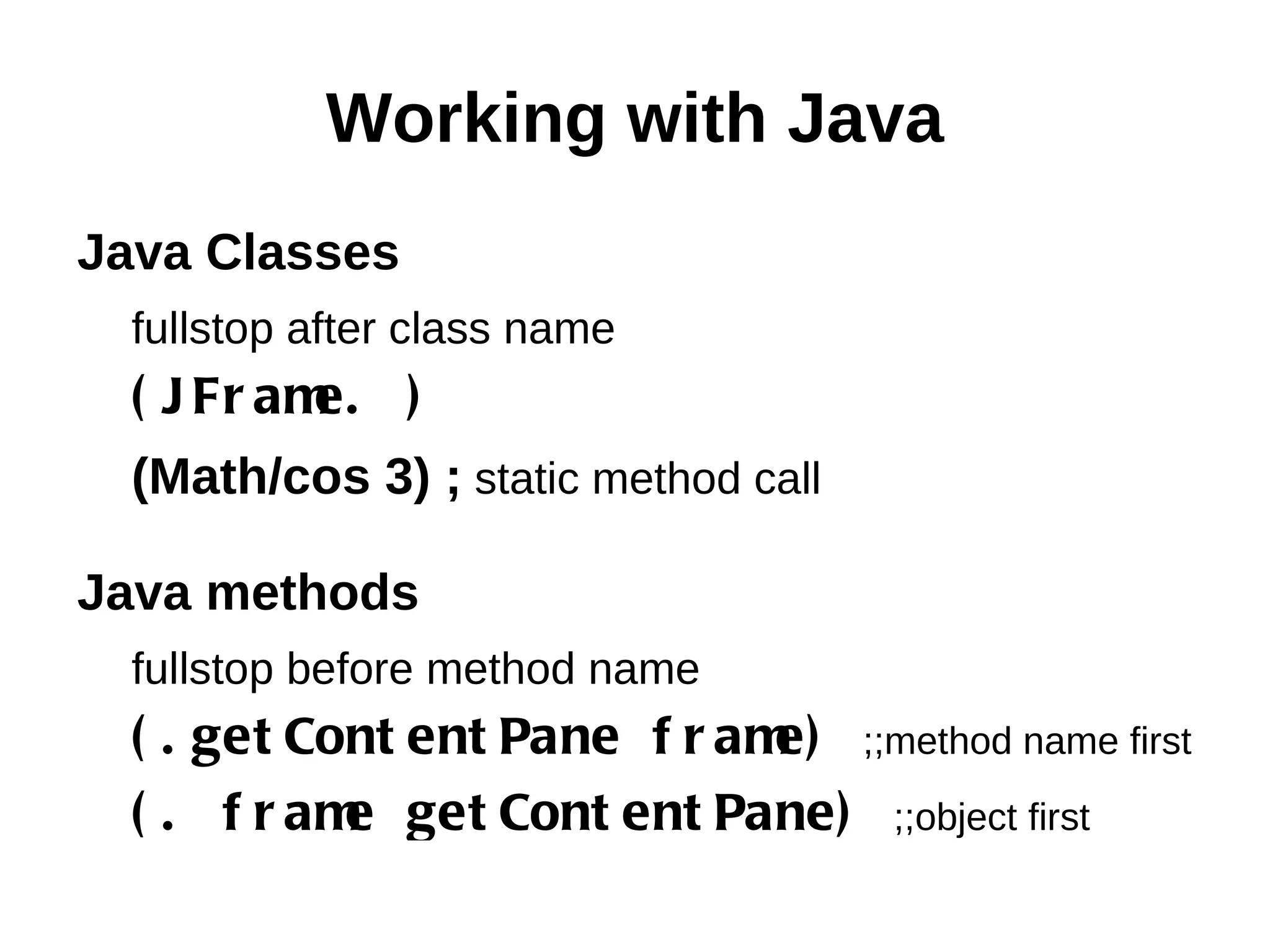
![What class is that... (class (str "Jr0cket")) java.lang.String (class (defn hello-world [name] (str "Hello cruel world"))) clojure.lang.Var](https://image.slidesharecdn.com/clojure-made-simple-skillmatter-fpx-2012-120316125310-phpapp02/75/Clojure-made-simple-Lightning-talk-54-2048.jpg)
![Clojure calling Java web stuff ( l et [ c onn] ( dot o ( Ht t pUr l Connec t i on. Ur l ) ( . s et Reques t M hod et “ POST” ) ( . s et DoOut put t r ue) ( . s et I ns t aneFol l ow Redi r ec t s t r ue) ) ] )](https://image.slidesharecdn.com/clojure-made-simple-skillmatter-fpx-2012-120316125310-phpapp02/75/Clojure-made-simple-Lightning-talk-55-2048.jpg)
